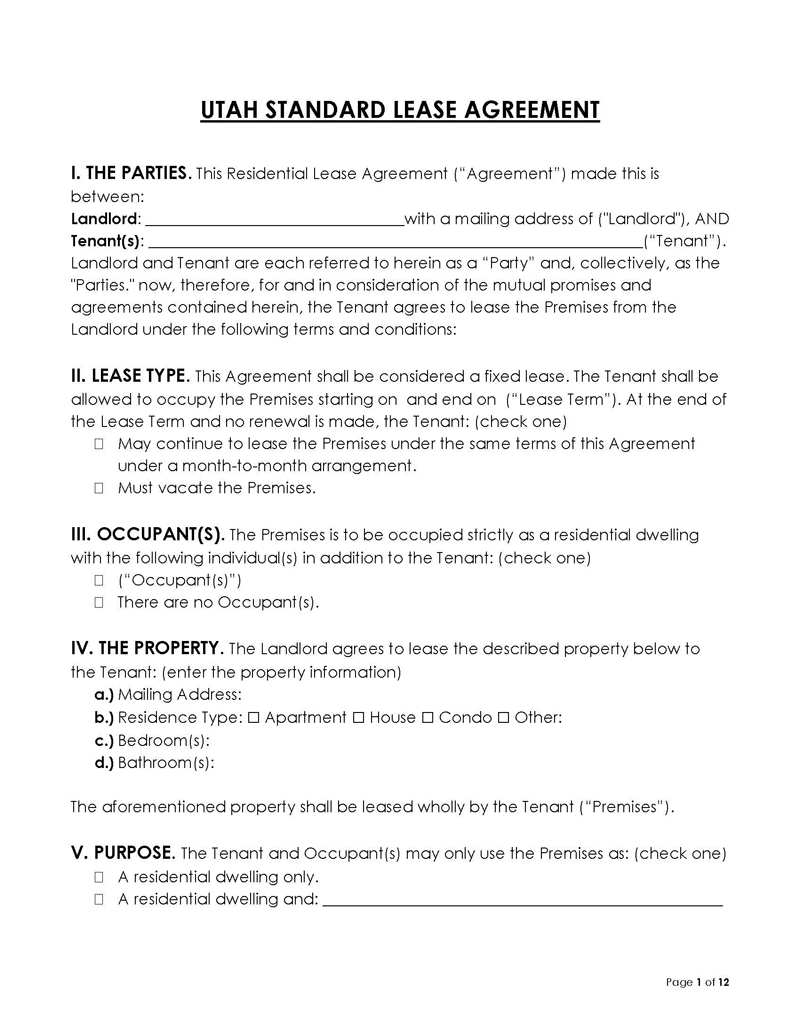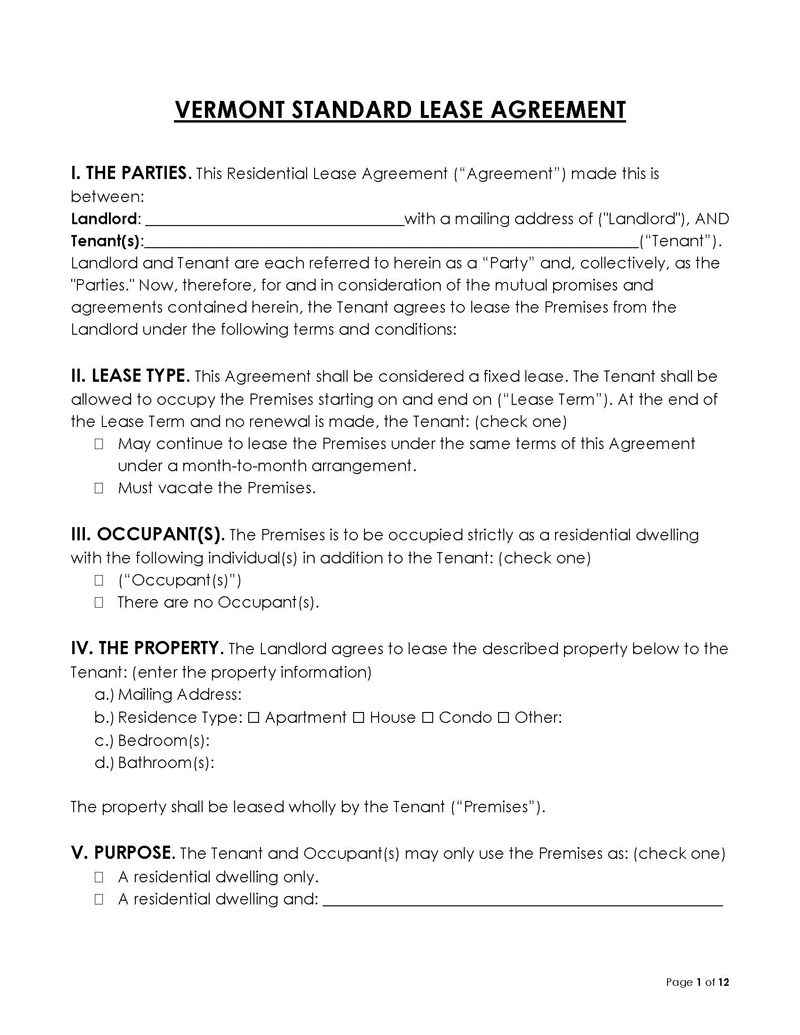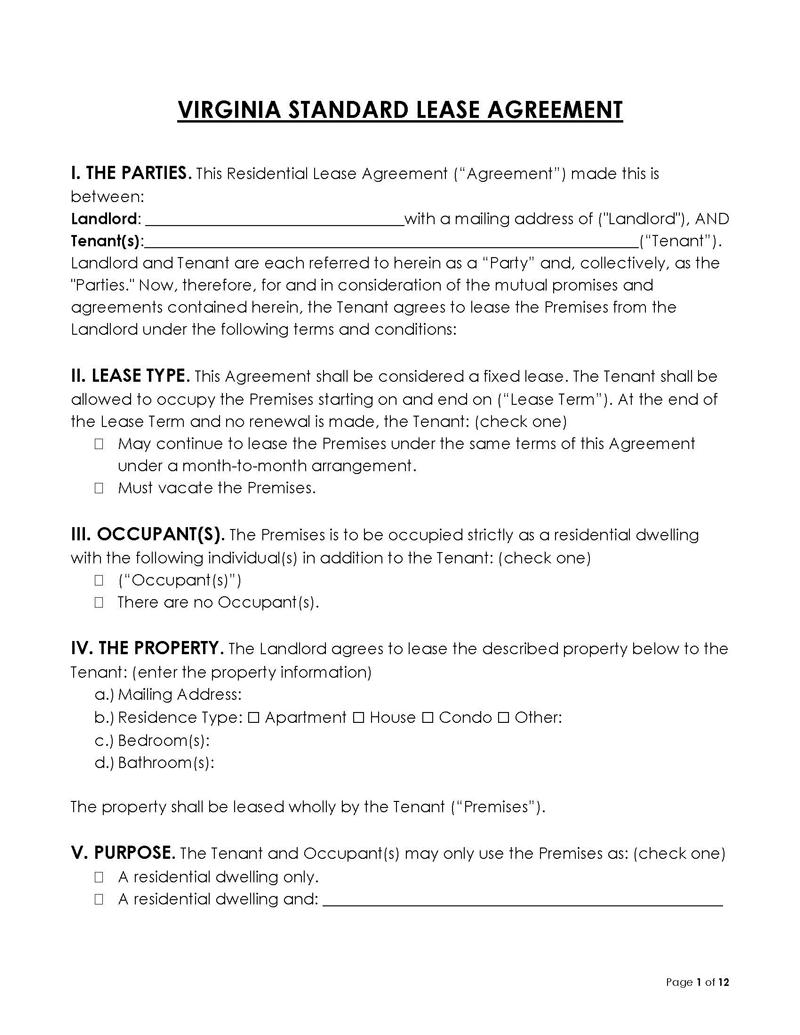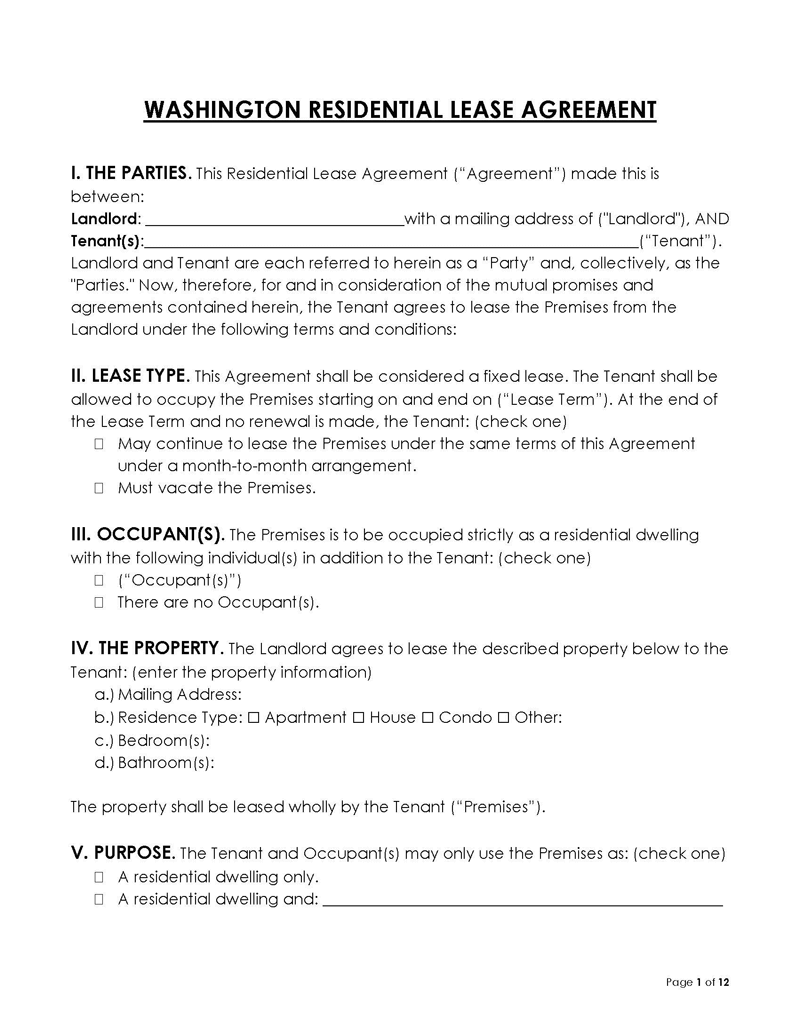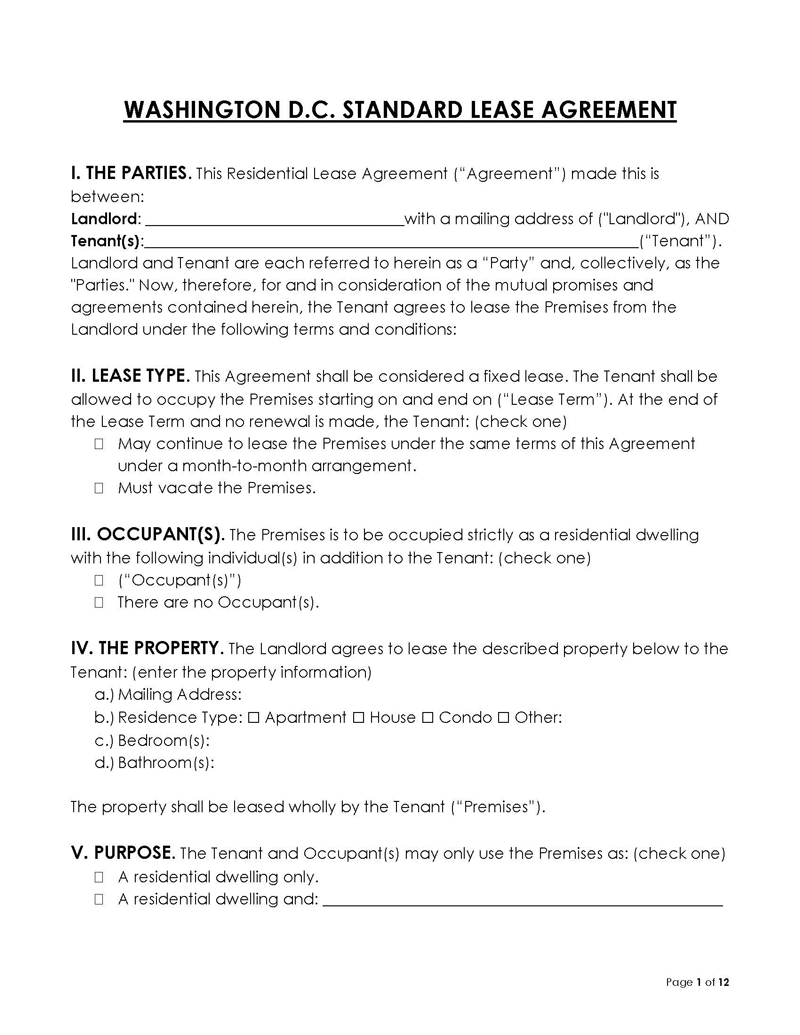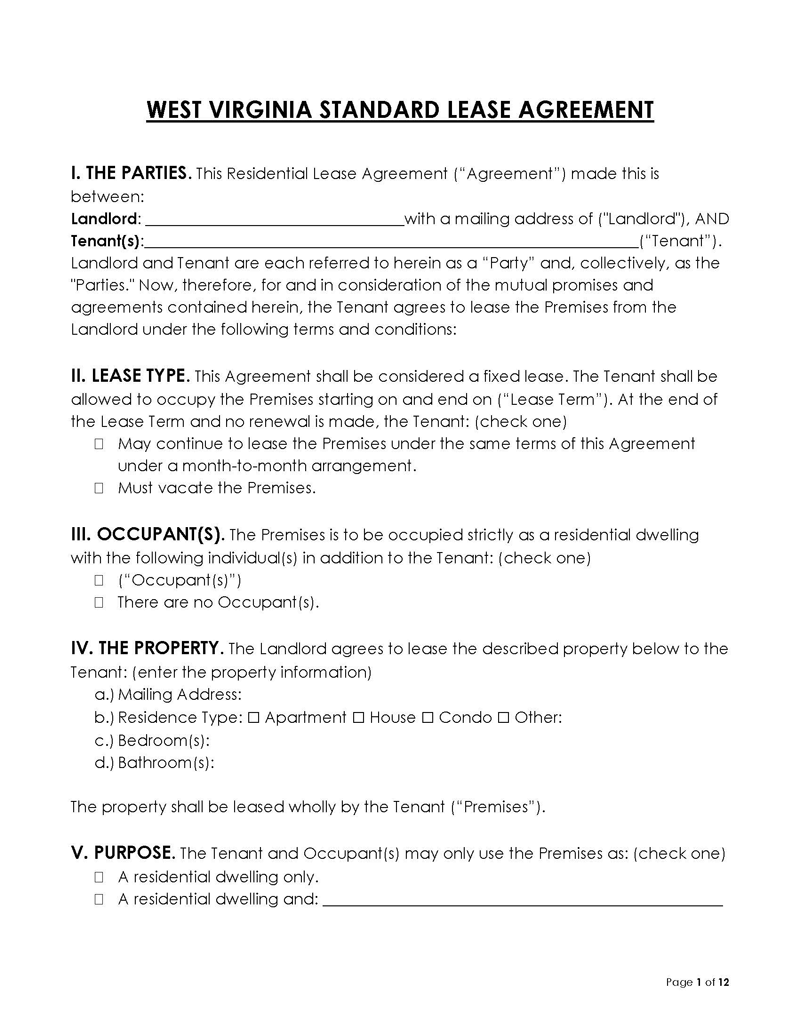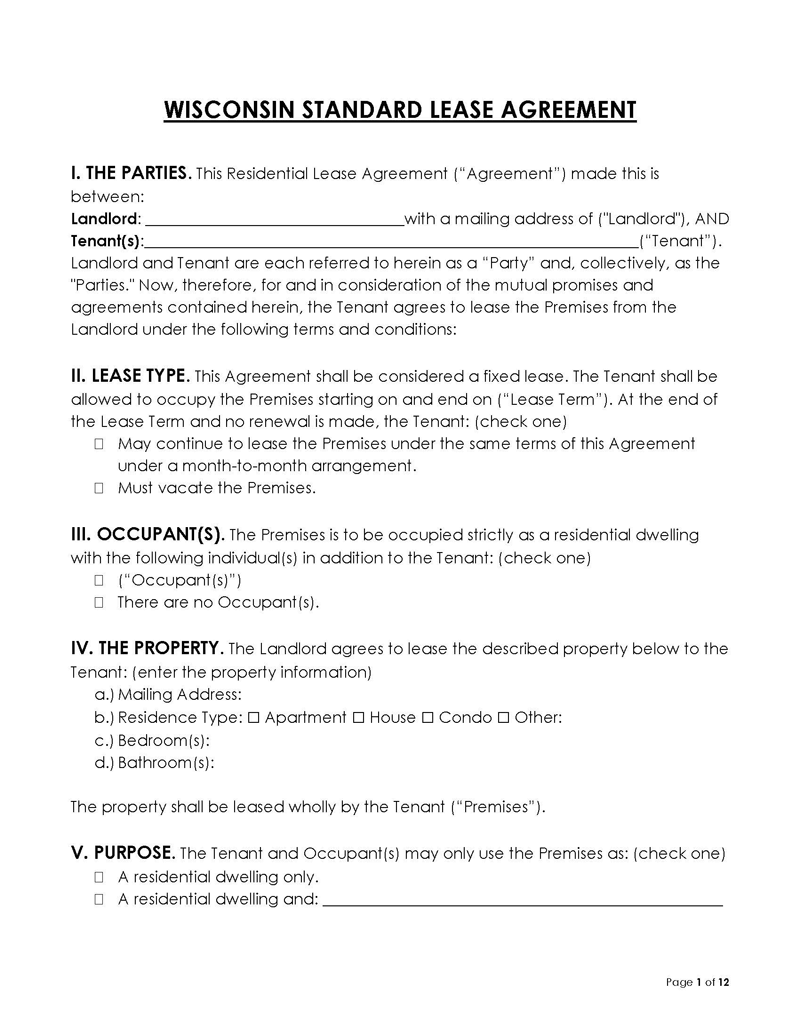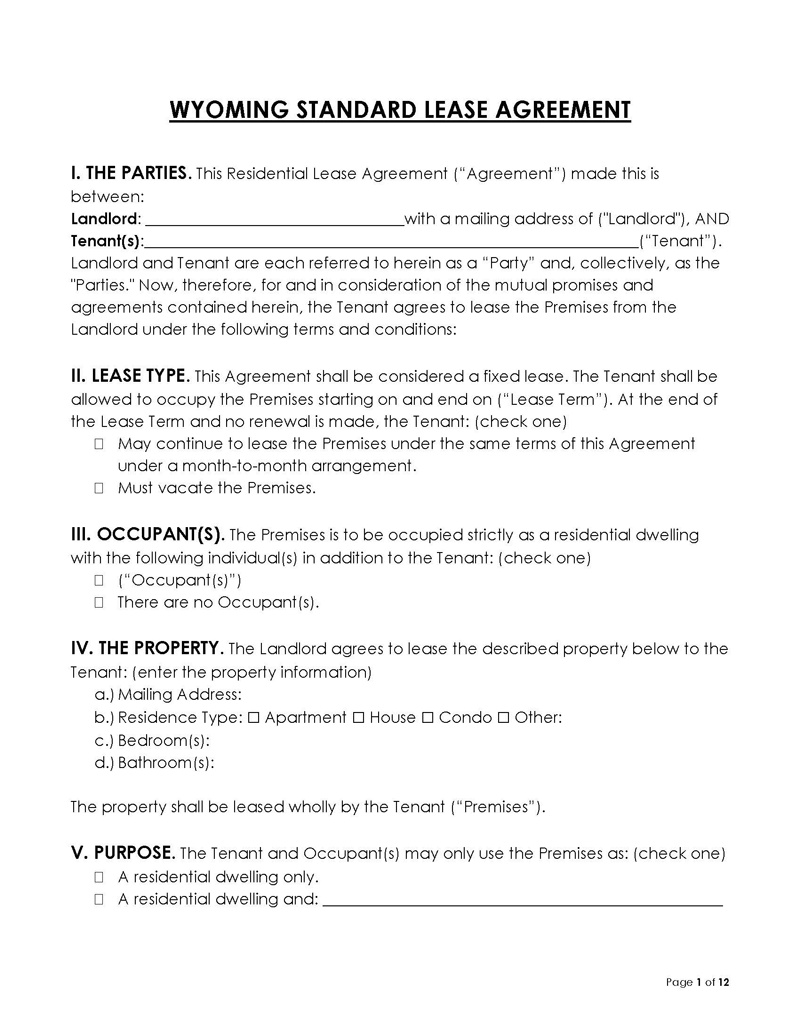A standard residential lease agreement is essential to know all the rights and responsibilities of being a landlord or a tenant. By understanding what is expected and what protections are offered, the involved parties can avoid potential conflicts or misunderstandings during the landlord-tenant relationship.
If you are looking to create a standard residential lease agreement, this article will assist you with the key points typically required to draft one. It will cover all the essential information, including lease terms, the rights and responsibilities of the tenant and landlord, security deposits, late fees, the documents a landlord needs to verify a tenant, and other relevant requirements.
You will also be provided a free downloadable standard residential lease agreement template to start your lease agreement with absolute ease. Whether you are about to sign your first lease or are just looking to update your knowledge, the following details will guide you.
Standard Residential Lease Agreement Templates
The details and conditions of a legally binding contract such as a residential lease agreement can be delicate, which makes crafting it from scratch a daunting task. Due to legal implications, it is not only essential to avoid typos, but it is also crucial not to leave any relevant details concerning the property and all parties involved.
Therefore, we have carefully crafted downloadable standard residential lease agreement templates that you can download for free. They can be customized to suit your needs; all you need to do is fill in all relevant information and have both parties sign the agreement. This simple step can help to ensure that you successfully drafted your standard residential lease agreement.
Find the free downloadable standard residential lease agreement templates here:
Standard Residential Lease Agreement
The standard residential lease agreement is a contract between a landlord and tenant that sets forth the tenancy terms, including the monthly rent amount and length of occupancy.
This agreement can be for one year lease period. The tenant must pay rent, a security deposit, and other relevant fees when signing the lease. The municipal, state-specific, and federal landlord-tenant laws exercise control on residential lease agreements.
The landlord and tenant have rights and responsibilities under the agreement outlined in the document. For example, the landlord is responsible for making necessary repairs to the property, while the tenant is responsible for keeping the property clean and paying the rent on time. The lease agreement may also include clauses regarding having roommates or pets.
This agreement provides stability and predictability for both parties and can help avoid misunderstandings or disputes. When any tenant shows interest in the property, they will be required to fill a rental application comprising personal information, background information, and credentials.
Alternate Names
A standard residential lease agreement may be referred to as other names, which are:
- Lease agreement
- Rental lease agreement
- Rental agreement
- Apartment lease
- Rental contract
- House rental agreement
- Tenancy agreement
- Lease form
- Rent-to-own lease agreement
Who, When, and Why Need Residential Lease Agreement?
Whether you are a landlord or tenant, it is crucial to understand the following: Who needs a lease agreement? When should it be used? And why is it so important?
Who
Corporate bodies or individuals interested in renting any residential property to or from another individual will need a residential lease agreement.
Below are real examples of those who need to use residential lease agreements:
- Homeowners with vacant properties for temporary tenants
- Persons who have rental property
- Tenants seeking to move into a new home
- Tenant placement services and property managers
- Anyone renting their home to friends or family
- Tenants who wish for an option to purchase the property in the nearest future
When
To minimize altercation between tenants and landlords, residential lease agreements are used during the leasing process of residential properties.
Such properties include:
- Condos
- Room rentals
- Single-family homes
- Apartments
- Mobile homes
- Other residential properties
Why
As a tenant or landlord, a residential lease agreement ensures that all tenancy details and conditions are legally sealed and guarantees that this contract is backed by physical evidence. This way, the original details of rights and obligations cannot be forgotten or misinterpreted by the parties (tenant and landlord) involved in the future.
We will take a look at examples of issues that could arise between a tenant and landlord if a residential lease agreement document does not exist, as shown below:
- The landlord and tenant could have contrasting expectations regarding the lease expiry date or renewal due date.
- The landlord may withhold their tenant’s security deposit since no physical or written document states the protocol for how and when the security deposit should be returned to the tenant.
- The landlord may choose to increase rent fees as they wish.
- The tenant may move out of the property at will and cause unexpected financial loss to the landlord.
- The tenant may end up not fulfilling their obligation on the total rental fees agreed on, and the landlord may not be able to prove the tenants agreed obligation.
- The landlord may serve the tenant an eviction notice before the agreed tenancy date.
Fixed Lease Vs. Month-to-Month Lease
Whether you are a tenant or landlord, the right lease option depends on your specific needs and situation.
Here is a look at the critical differences between the two:
Fixed lease
- Fixed-term (has a specific start and end date of tenancy)
- The parties involved cannot end the contract early
- Parties cannot alter the agreement
Month-to-month lease
- This agreement can be renewed monthly (tenancy-at-will)
- Any of the parties can terminate (but must comply with Month-to-Month Termination Laws)
- With appropriate notice, the agreement can be altered
Lease Agreement Vs. Rental Agreement
There is no official difference between “lease agreement” and “rental agreement” in the United States. They both contain the same rental information and serve as legal contracts between a tenant and their landlord. This allows them to function similarly when renting property or apartments. The term “lease agreement” is used when a tenancy lasts twelve months. On the other hand, the term “rental agreements” is used when the tenancy lasts one month.
How to Write?
It is essential to familiarize yourself with the basics of writing a residential lease agreement to create a document that protects the interests of all parties concerned (tenant(s) and landlord).
We will discuss some critical components of a standard residential lease agreement and tips for drafting one according to your needs:
Identify the parties
The parties involved in the lease agreement should be named in the lease agreement document. The landlord and the tenant’s legal names must be included in any residential lease agreement. In addition, if more than one individual will be living in the apartment and are responsible for the lease payment, their names should be identified as tenants in the residential lease agreement. Individuals such as children or families not sharing the rental fee should be named “occupants”.
Property location
Property location will be included in the lease agreement so that both parties (tenant and landlord) know the address of the property or rental unit. This should include the street address, city, state, and zip code. The property location is vital because it will determine the jurisdiction in which the residential lease agreement will be enforceable.
Rent amount
The prospective landlord is advised to seek the rates other landlords place on similar properties or units. In addition, take a closer look at the breakdown of other fees such as utilities and services charges, mode of payment, and payment due date to avoid misunderstandings in the future.
Late fees
Some states specify the maximum limit for late fees, while others do not. The late fees laws should be confirmed by checking through the state’s laws, based on the property’s location. All parties (tenant and landlord) should have a mutual agreement on the conditions of the late fee and clearly state these conditions in the lease agreement.
Security deposit
A security deposit is a sum of money paid by the tenant at the beginning of the lease to the landlord, which is usually held in an escrow account. It is typically used to cover damages to the rental unit and pay for any unpaid rent if the tenant refuses to pay their rent or vacate the property before the agreed time. If these issues do not occur till the end of the tenancy, the security deposit is returned in full to the tenant. The security deposit amount must be stated in the lease agreement, including the return protocol.
Utilities and services
Utilities and services are essential for the regular maintenance and management of the property. They vary by property location and are also included in the final lease amount. Examples are water, electricity, trash, home heating and cooling, lawn care, and snow removal.
Furnishings
All pieces of furniture that are present on the property before the lease must be included in any standard residential lease agreement. Therefore, the tenant should carefully inspect the property and confirm that the furniture listed is accurate. The landlord will be liable to claim every piece of furniture listed in the agreement.
Lease term
A standard residential lease agreement should include the “lease term”. The “lease term” for standard residential lease agreements is usually 12 months. In addition, if there are conditions that make the tenant require another lease term, it should be agreed upon and stated clearly in the lease agreement.
Early termination
No state laws restrict early termination of a standard residential lease agreement; however, if the landlord and tenant want early termination to be included, they must agree and add it to the agreement before signing. In addition, the lease agreement should include information on how to terminate the contract and any fees involved. Although fees are not usually required, if it does, it is often equated to one month’s rent. The other party is then given a 30-day notice.
Smoking policy
A residential lease agreement without a smoking policy automatically gives a tenant the right to smoke on the property. However, if a landlord does not want smoking activities on the property, it should be stated clearly in the agreement.
Pets
Landlords must state which pets are allowed and are not allowed on the property. Most states allow landlords to charge a pet fee or a deposit independent of the usual security deposit. Landlords may also state the maximum weight of a pet for caution towards premises damages.
Lead-based paint disclosure
Lead-based paint disclosure is one of the most critical disclosures in a residential lease agreement. The U.S. federal law 42 U.S. Code § 4852d states that for any structure on a property built before 1978, the landlord must include a lead-based paint disclosure in the lease agreement. This serves as a warning that if any chipping, deteriorating, or paint cracking is noticed on the premises, the tenant should contact the landlord or appropriate authorities instantly.
Signatures of landlord and tenant
A residential lease agreement should be signed by both parties (tenant and landlord). In some jurisdictions, the agreement must also be notarized. Once signed, a residential lease agreement becomes legally binding and can be used as evidence in court if there is a dispute. In addition, if either party breaches the agreement, they may be liable for damages.
Date
This is the day that the contract officially begins. The date should be complete, with the month, day, and year. For example, the date might look like September 13, 2022.
Statistical Insight: It was discovered that landlords per rental property screen an average of 2 applicants. During the peak renting season of April 2017 to August 2017, TransUnion Smart Move data showed that an average of two (2) prospective tenants (applicants) were screened by landlords. Therefore, landlords are advised to widen their search to find a suitable tenant within a reasonable time frame.
Documents Needed to Verify Tenant
The following are the significant documents and credentials a landlord may require from a prospective tenant:
Employment history
Landlords want to confirm a tenant’s job stability by requesting the applicant’s employment history. Usually, 3 – 5 years of uninterrupted employment at the company listed in the employment history will suffice. However, a long period of unemployment will also make the tenant seem unreliable and unable to continue rent after the first payment.
Current pay stubs
This is a prospective tenant’s last 2 weeks’ pay stub that the landlord will request. This serves as proof of income.
Past income
All prospective tenants must provide their last 2-3 years of income tax filed with the IRS (Internal Revenue Service). Form W-4 is for employees, and Form 1099 is for self-employed applicants or independent contractors.
Rent prepayment
Landlords will agree to a lesser monthly amount when the applicant is willing to pay rent in advance right at the beginning of the lease. This happens mainly if the advance payment covers three (3) months or more.
Security deposit
Most States have established a maximum-security deposit amount. The tenant must meet the requirement depending on the jurisdiction and property involved.
Landlord history
Applicants (tenants) must present verifiable references to the new landlord by providing contact information of prior landlords or property managers whom they have rented properties from.
Frequently Asked Questions
Can the Landlord or Tenant Break a Standard Lease?
No. A landlord or tenant cannot break a standard residential lease agreement before the end date.
Does a Lease Need to be Witnessed or Notarized?
No. All 50 states do not require a lease to be signed in the presence of a witness or get notarized.
Can I add a Roommate to a Standard Lease?
Yes. The guidelines of tenant or co-tenant addition under standard residential lease agreements should be consulted. This will involve criminal, financial, and rental history evaluation.
Can the Tenant Remain on the Property After the Lease Ends?
Yes. The landlord will send a lease extension addendum to the tenant before the agreed lease end date. This will include the extension term, a new end date, and other short-stay conditions.
Is it Possible to Transfer a Lease?
No. The lease transfer can only happen if the lease agreement already has assignment rights because, usually, lease agreements automatically include a language that disallows lease transfer.
Can I write my lease agreement?
Yes. It is certainly possible to write your lease agreement. All you need to do is follow the template provided above.
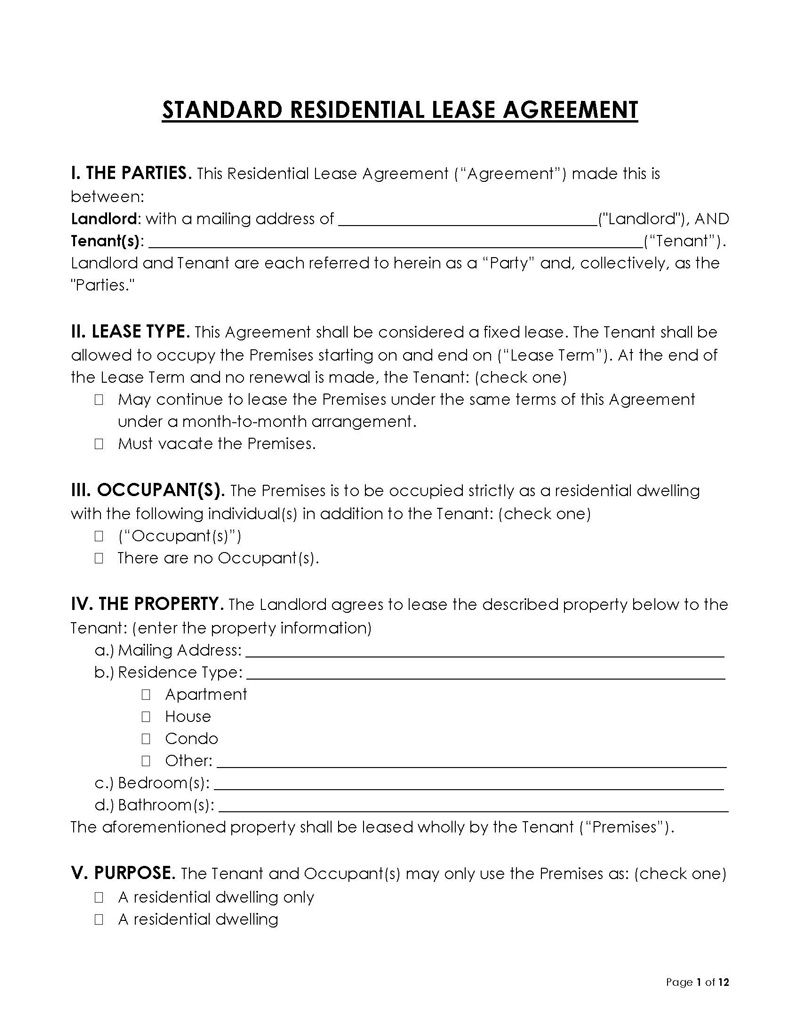
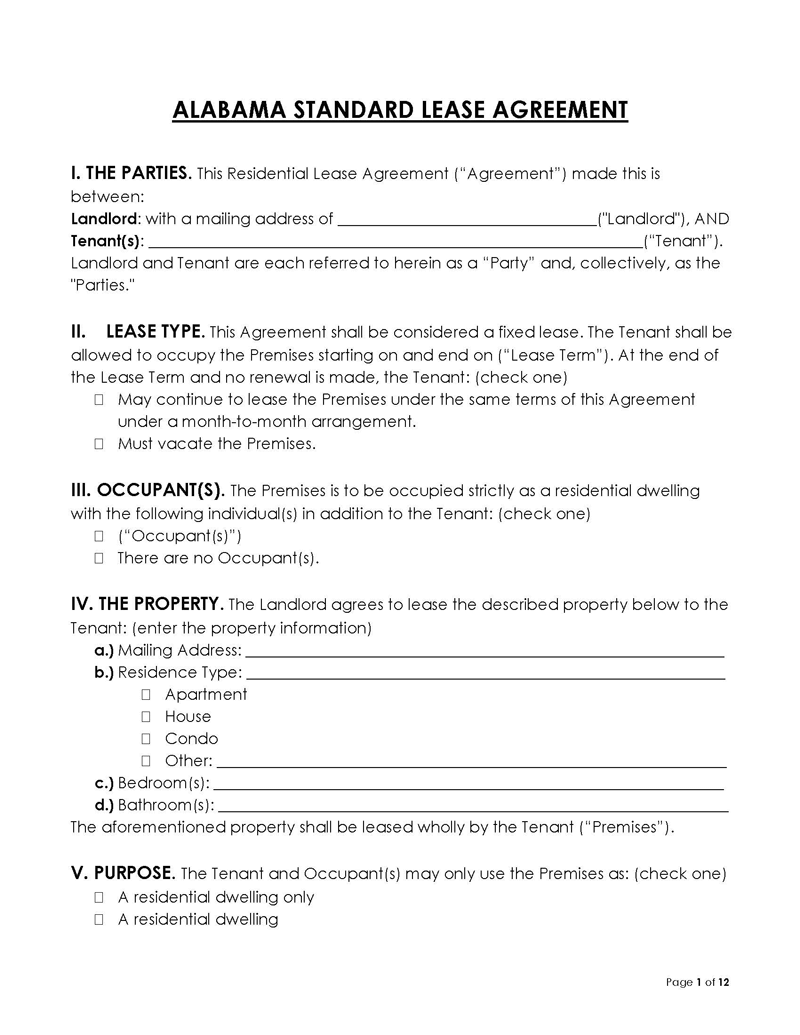
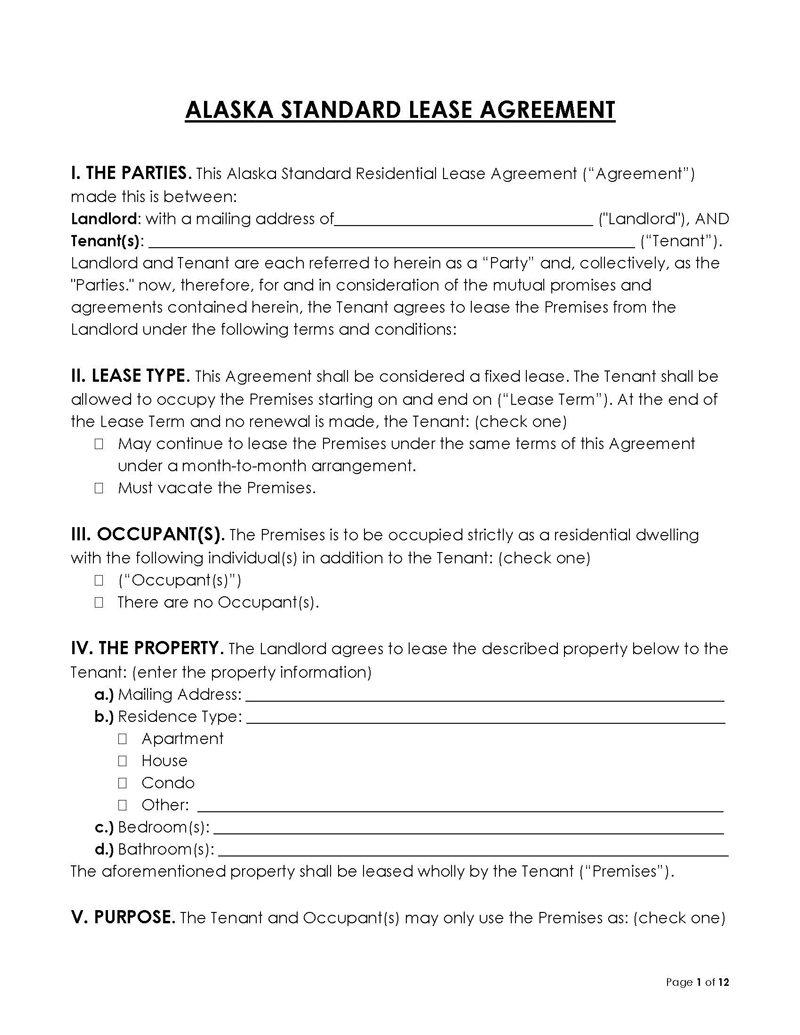
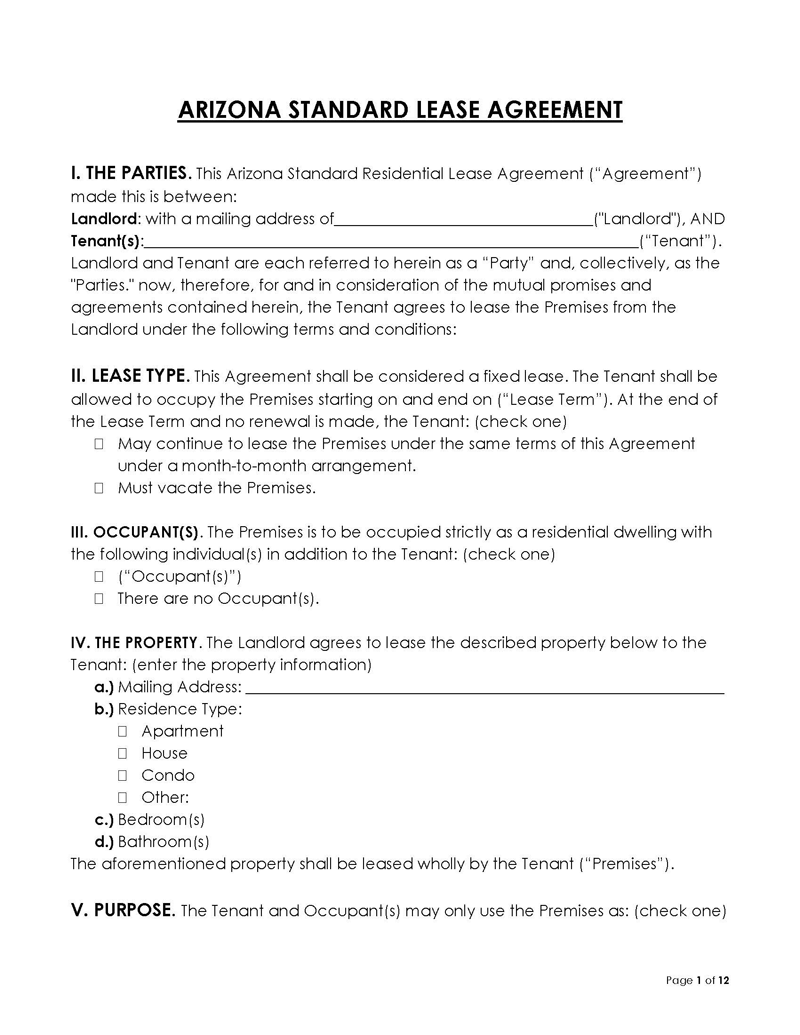
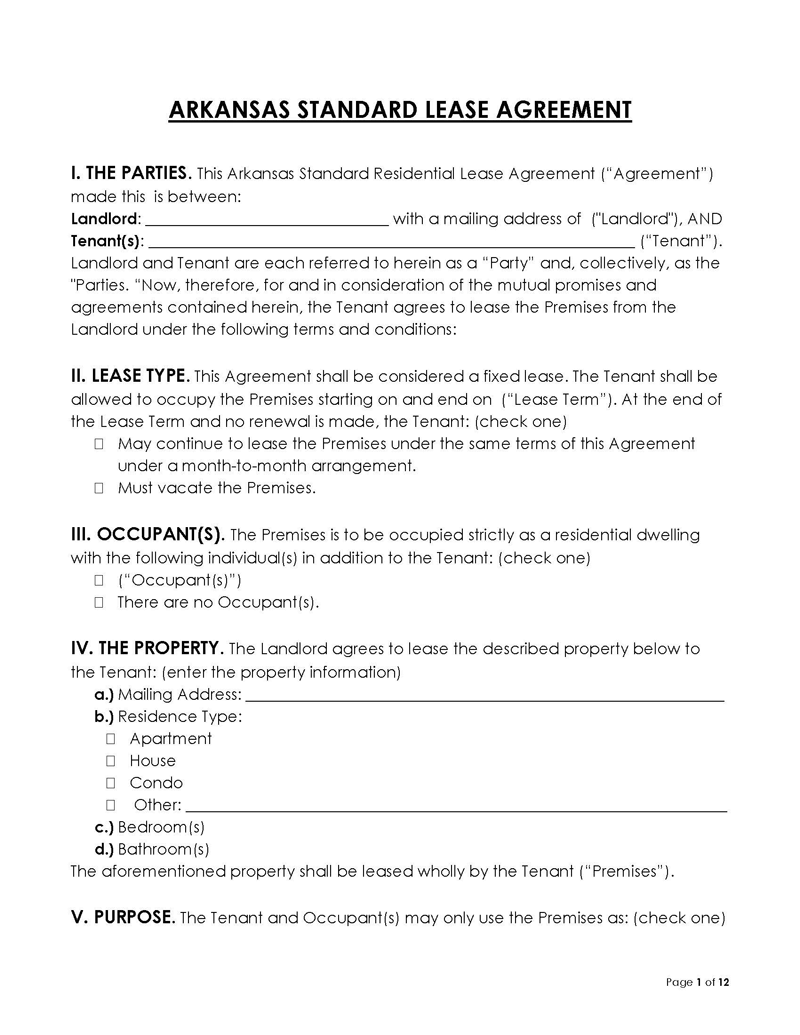
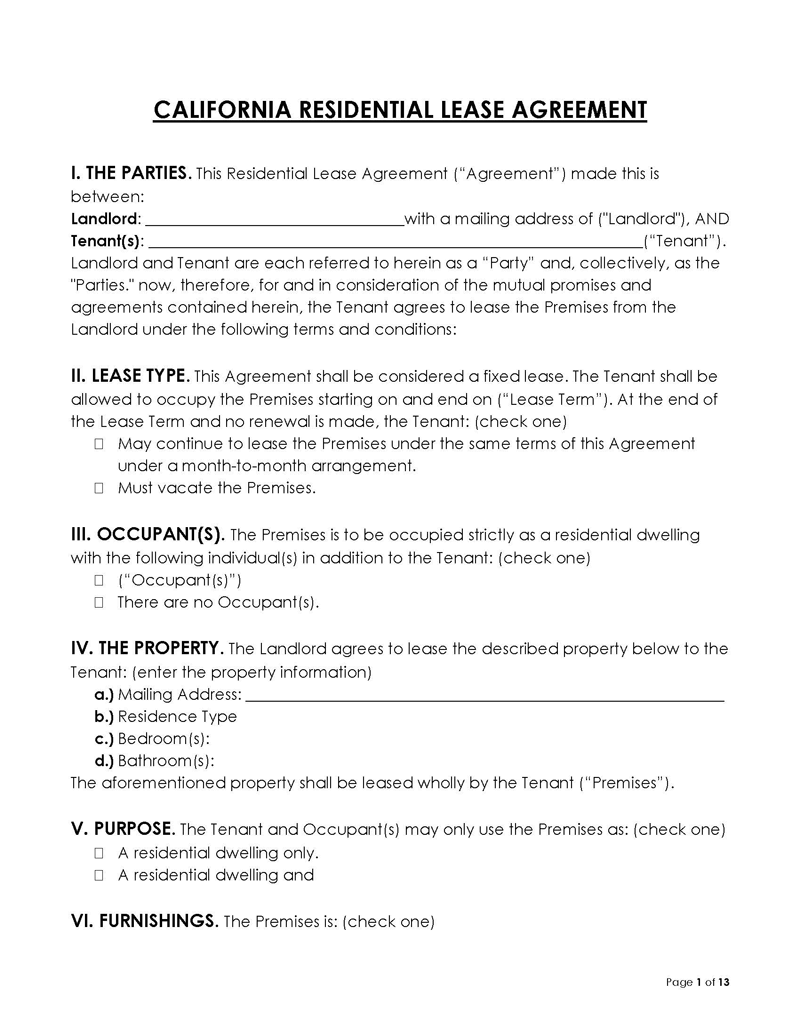
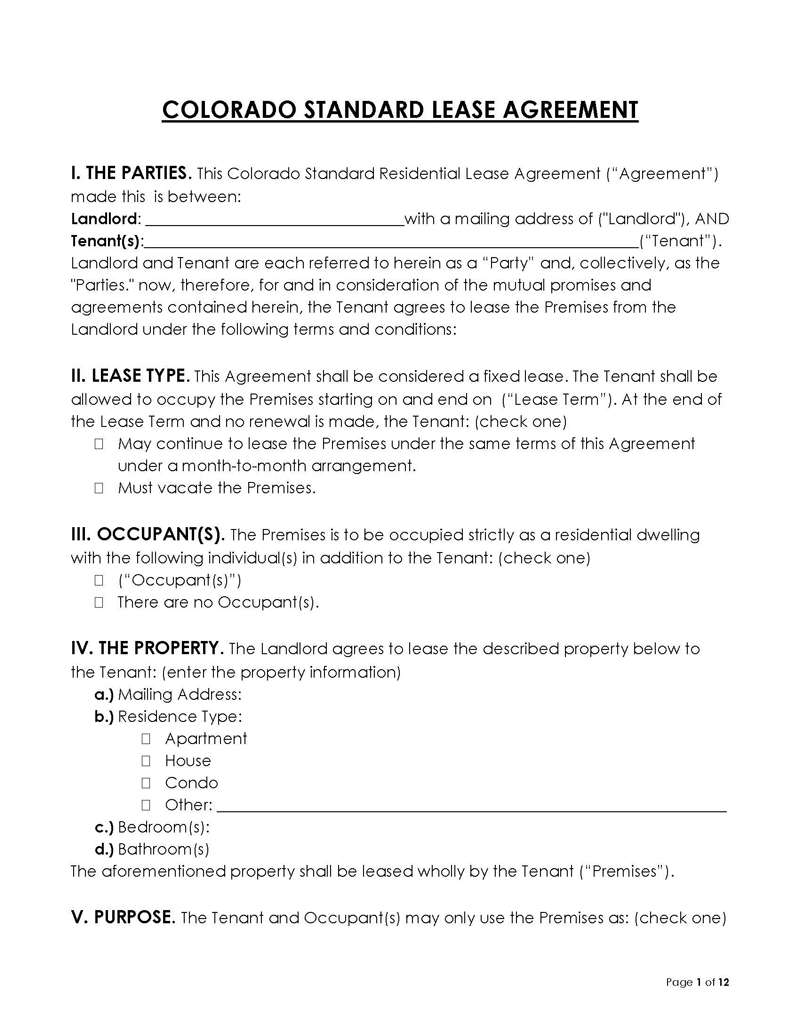
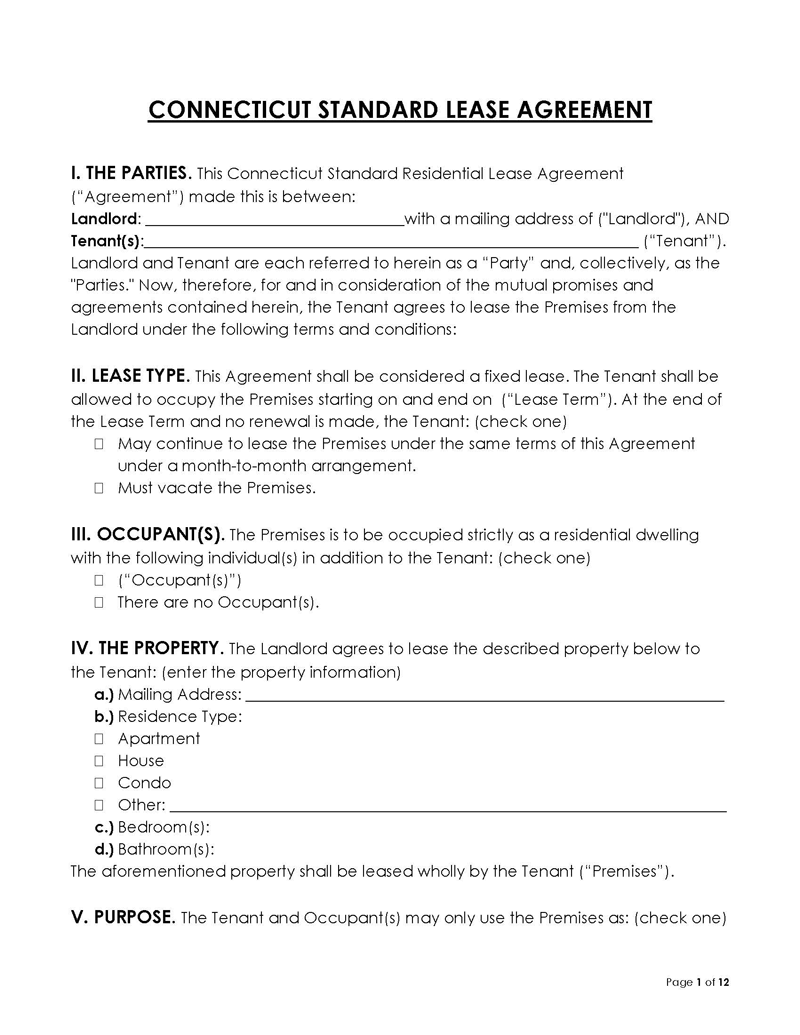
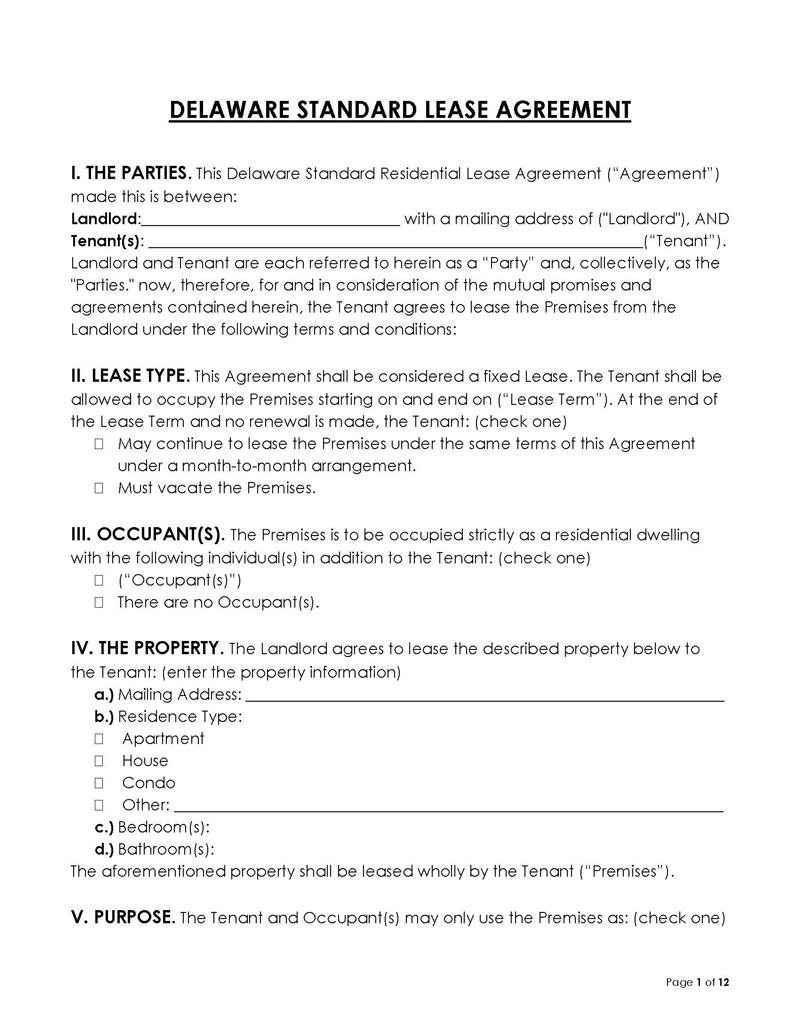
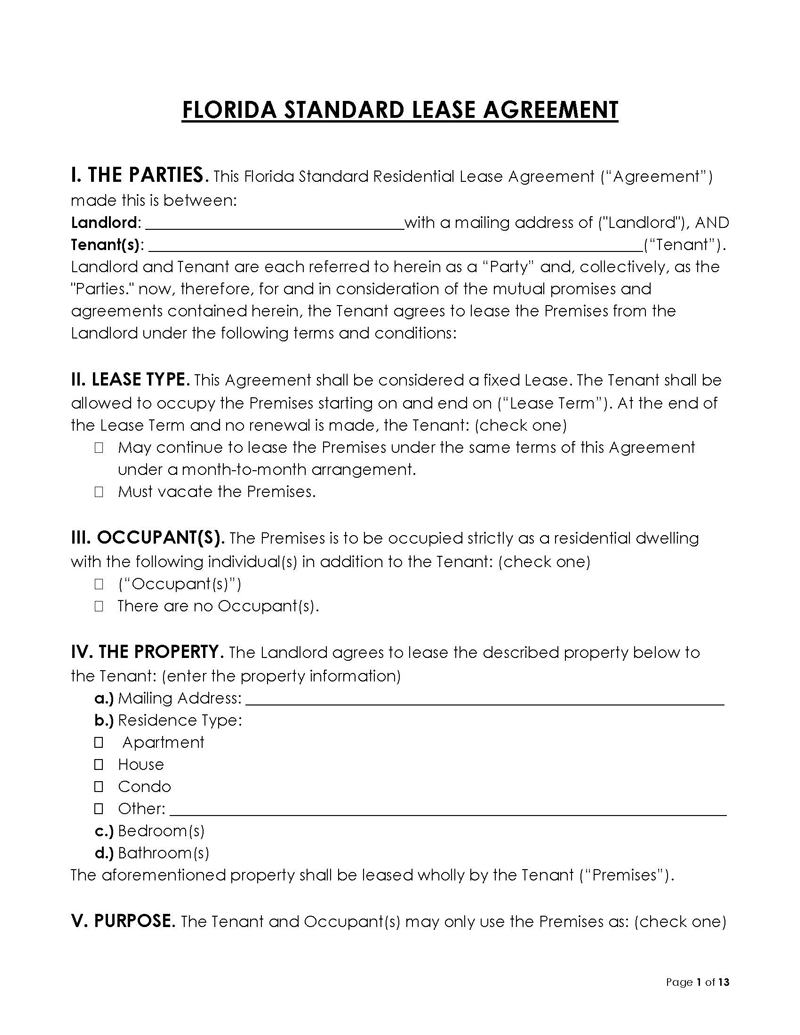
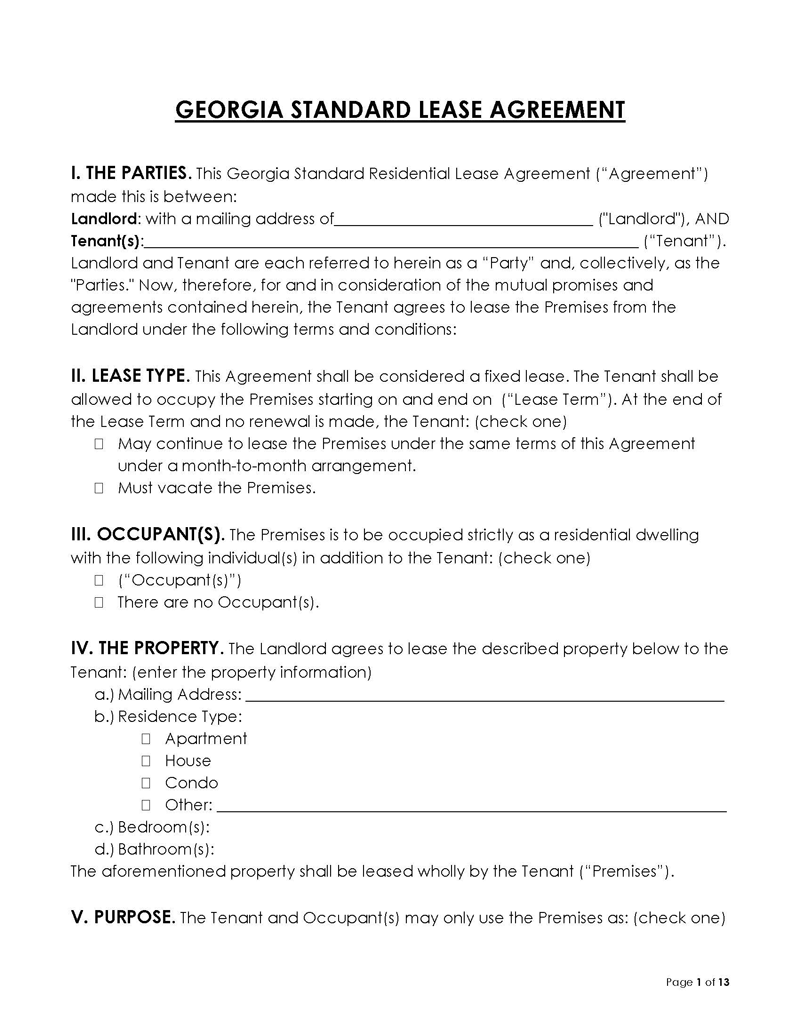
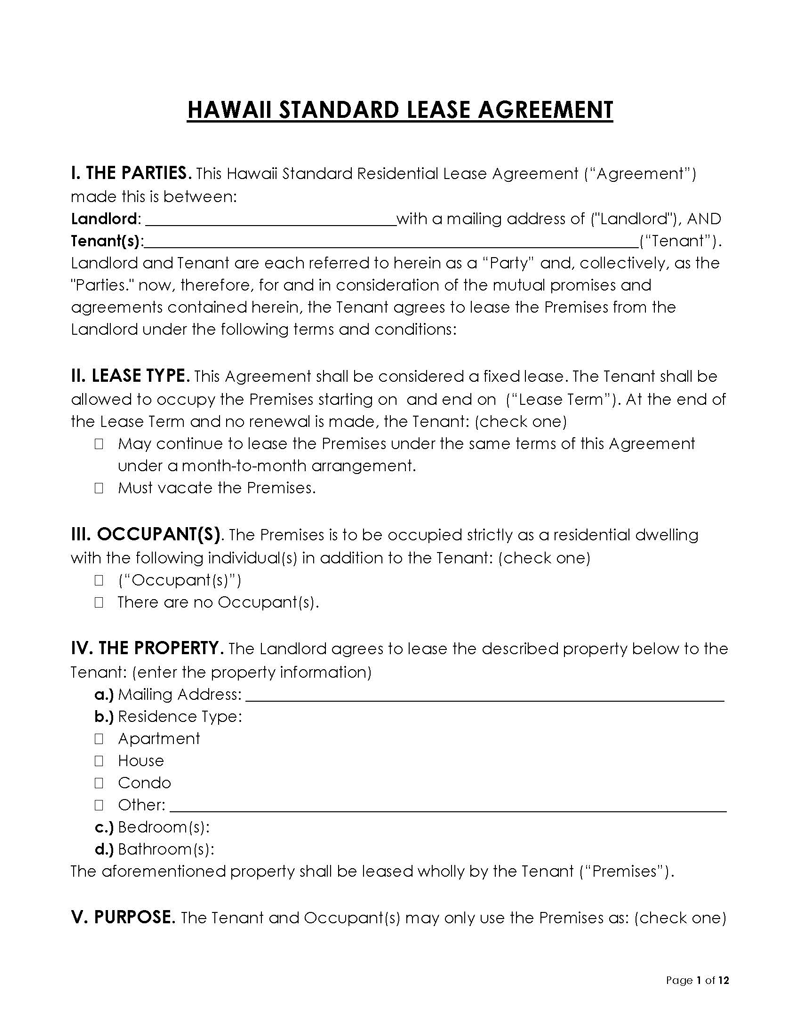
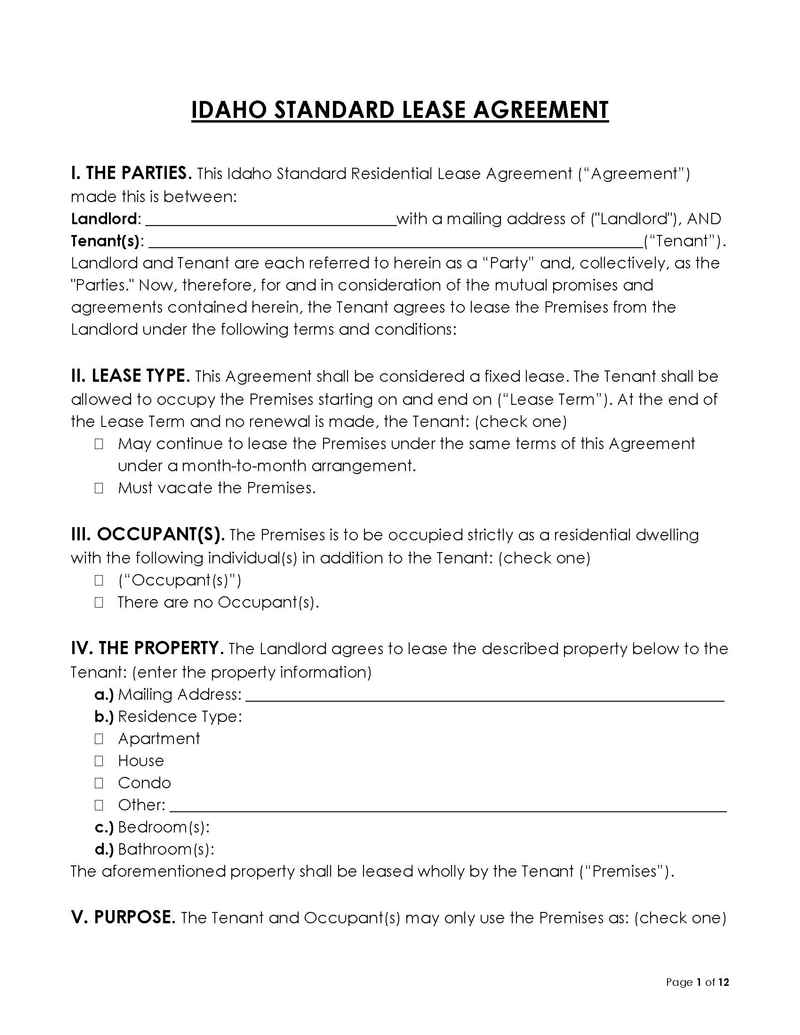
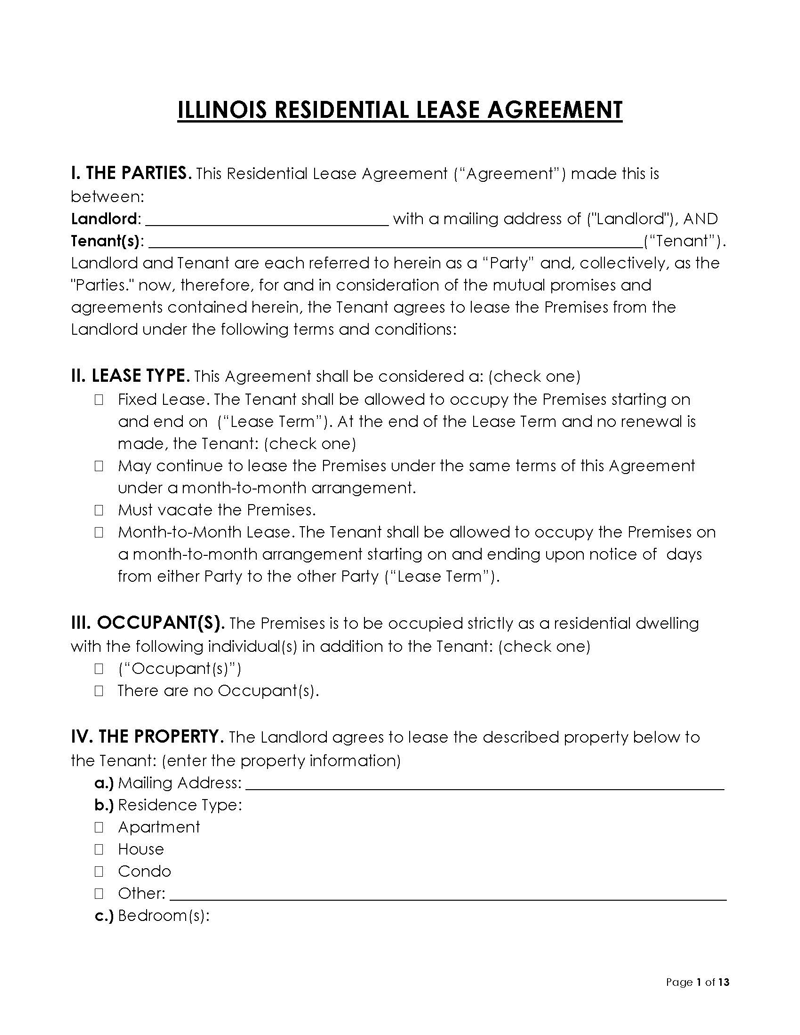
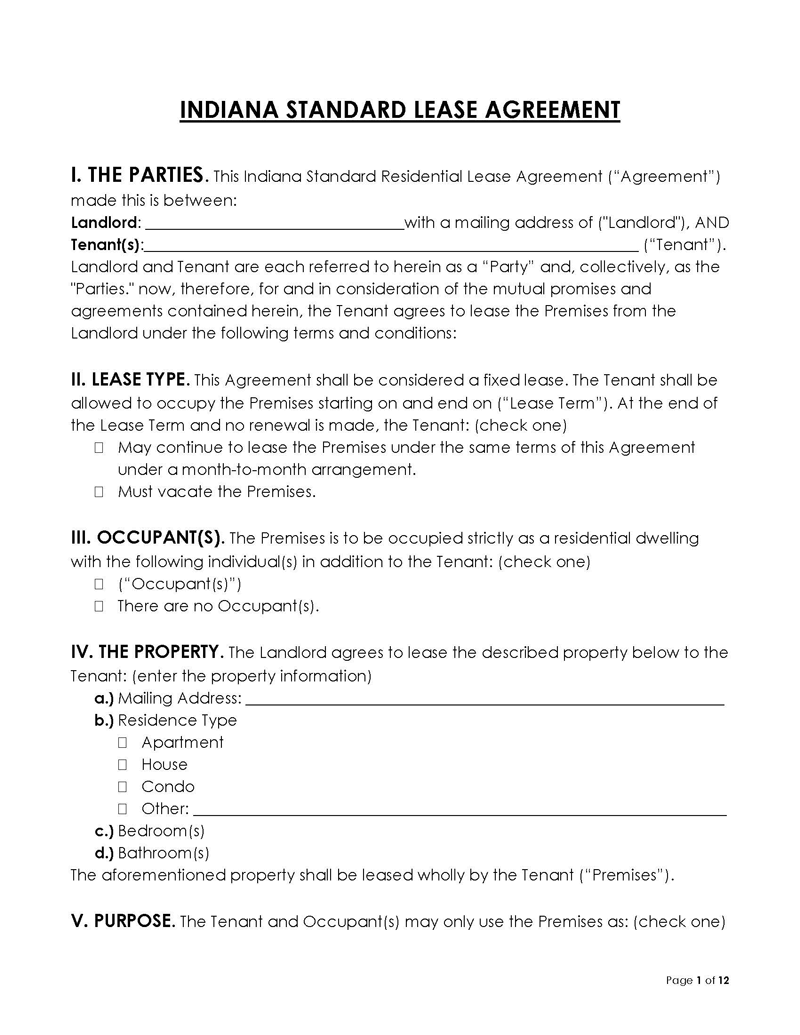
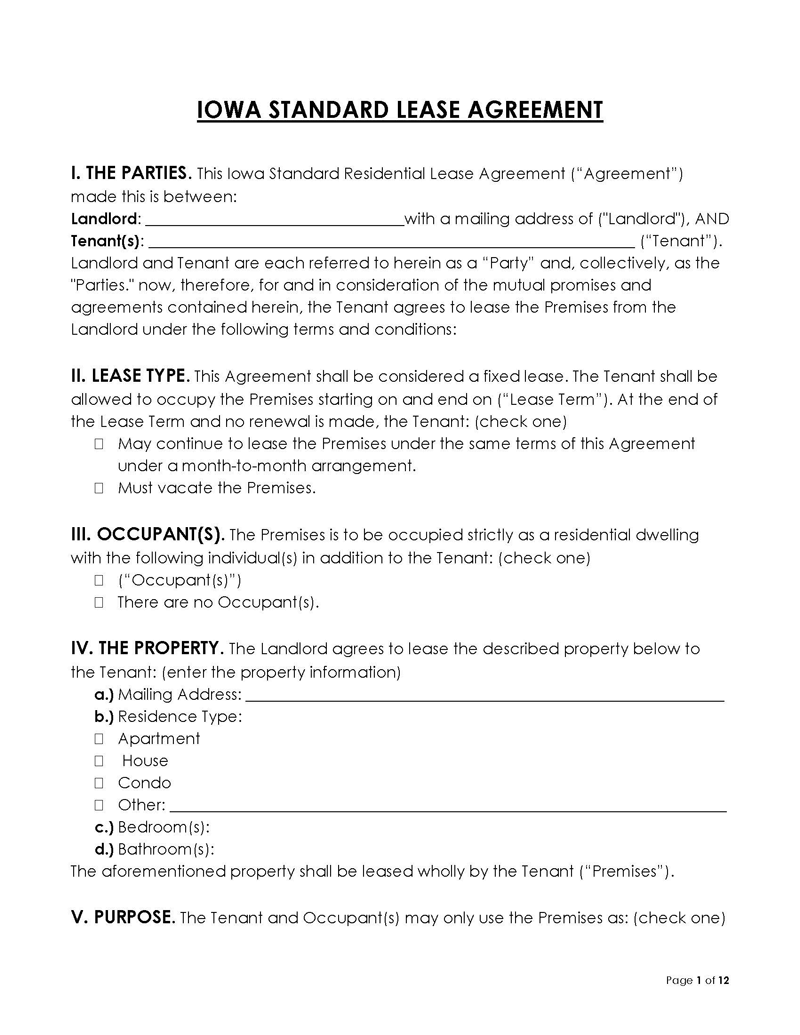
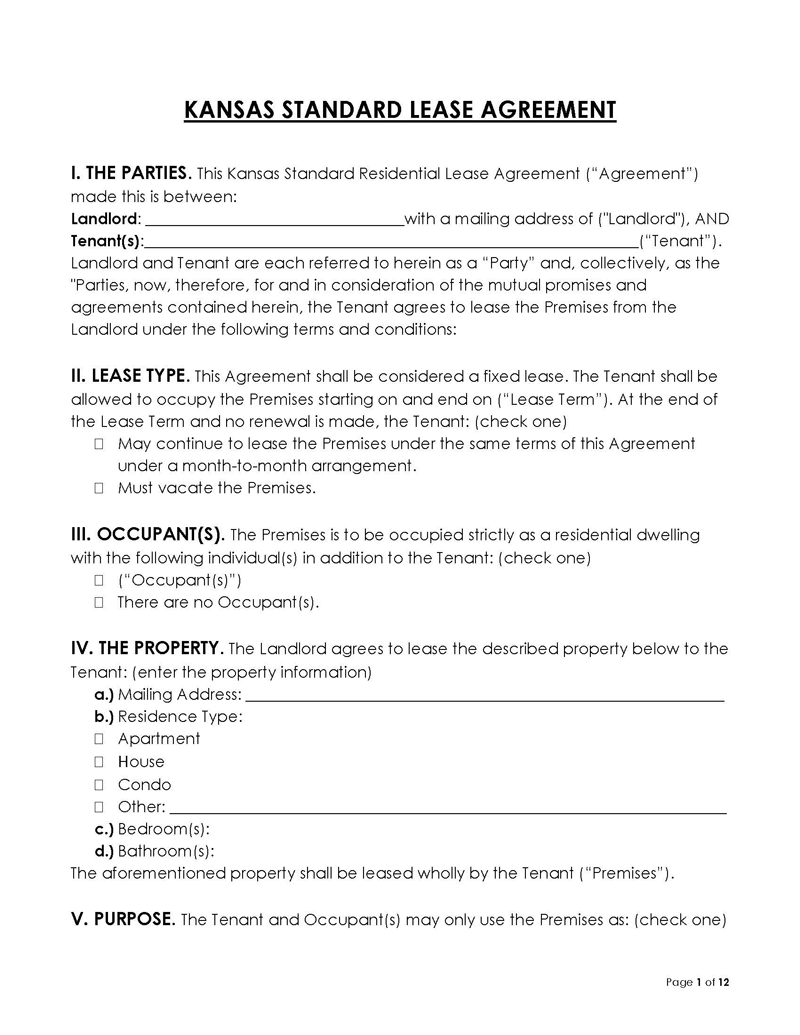
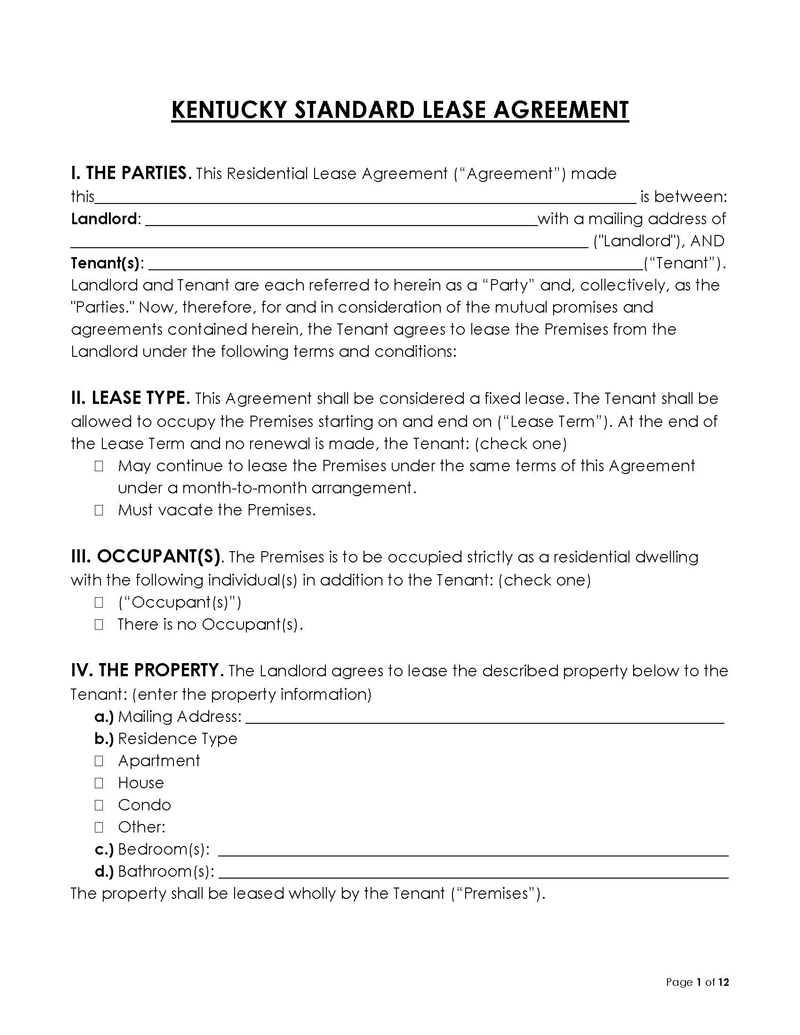
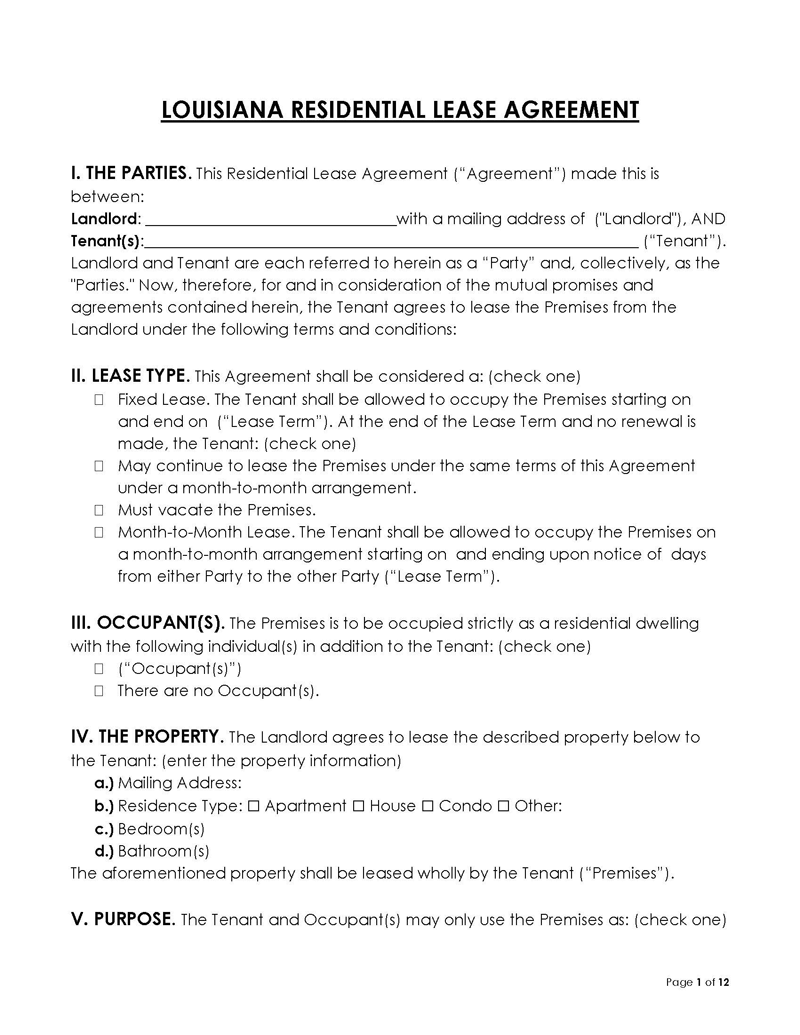
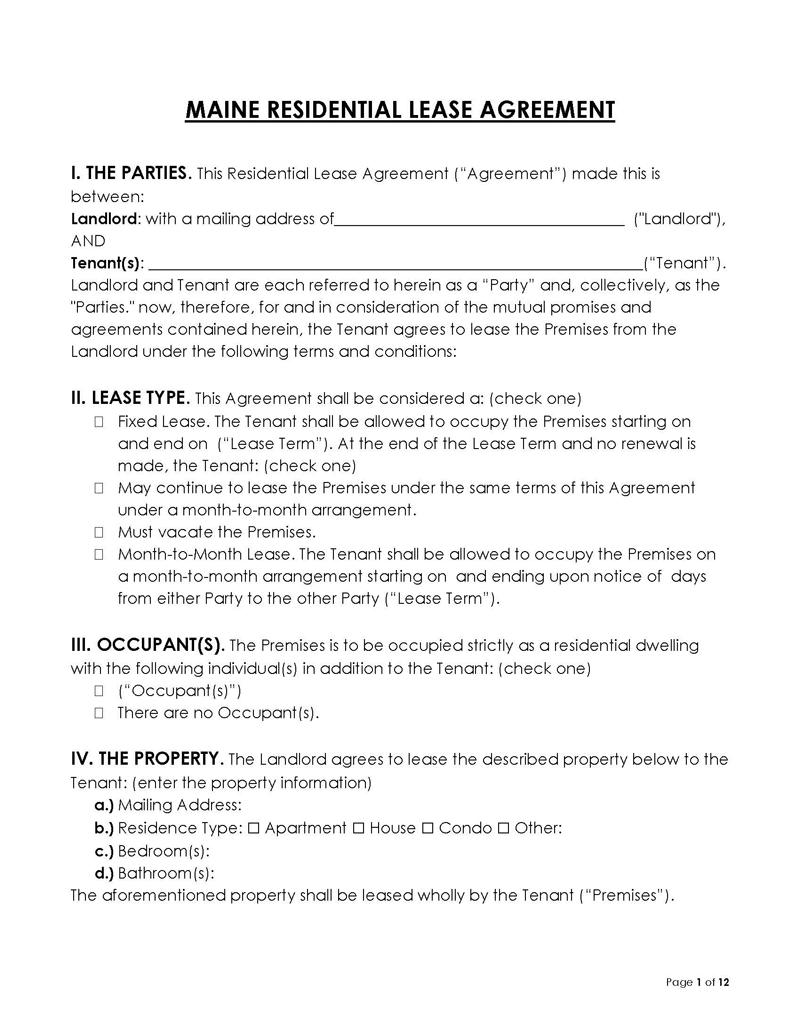
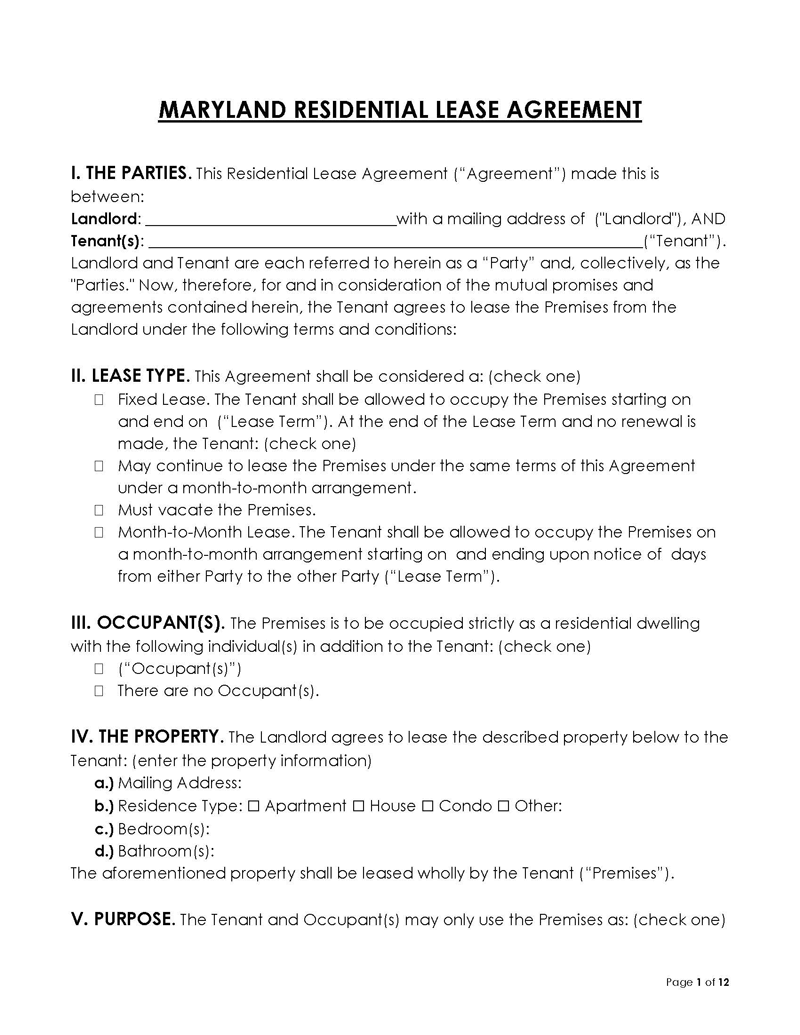
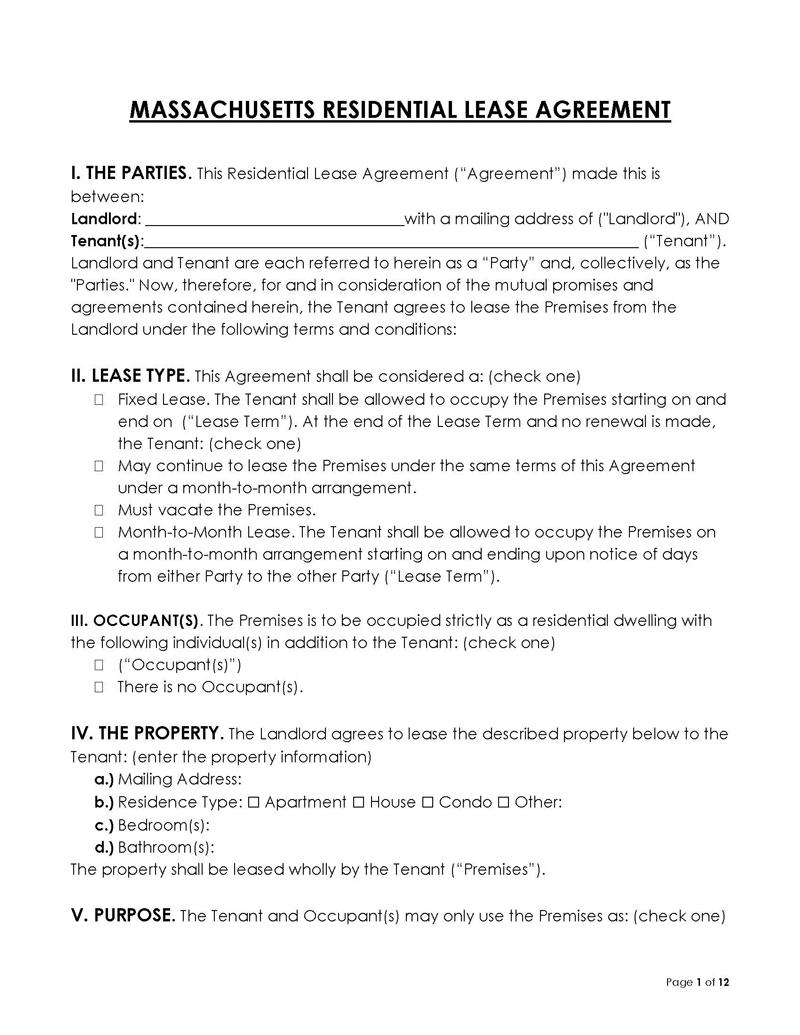
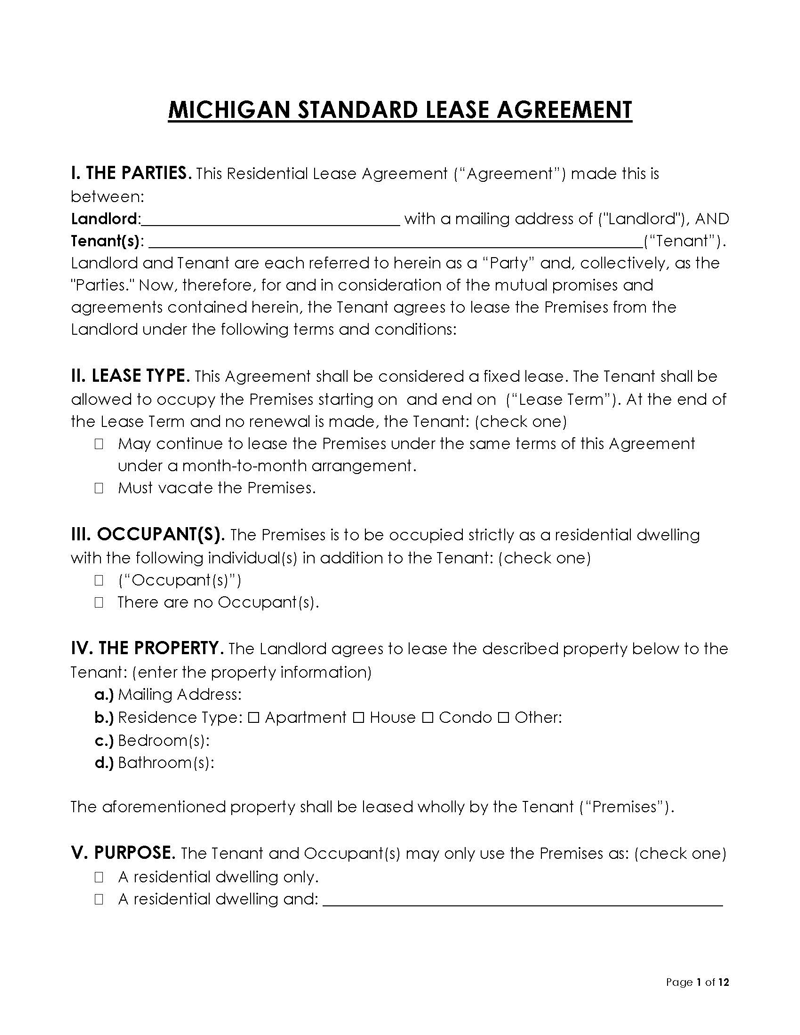
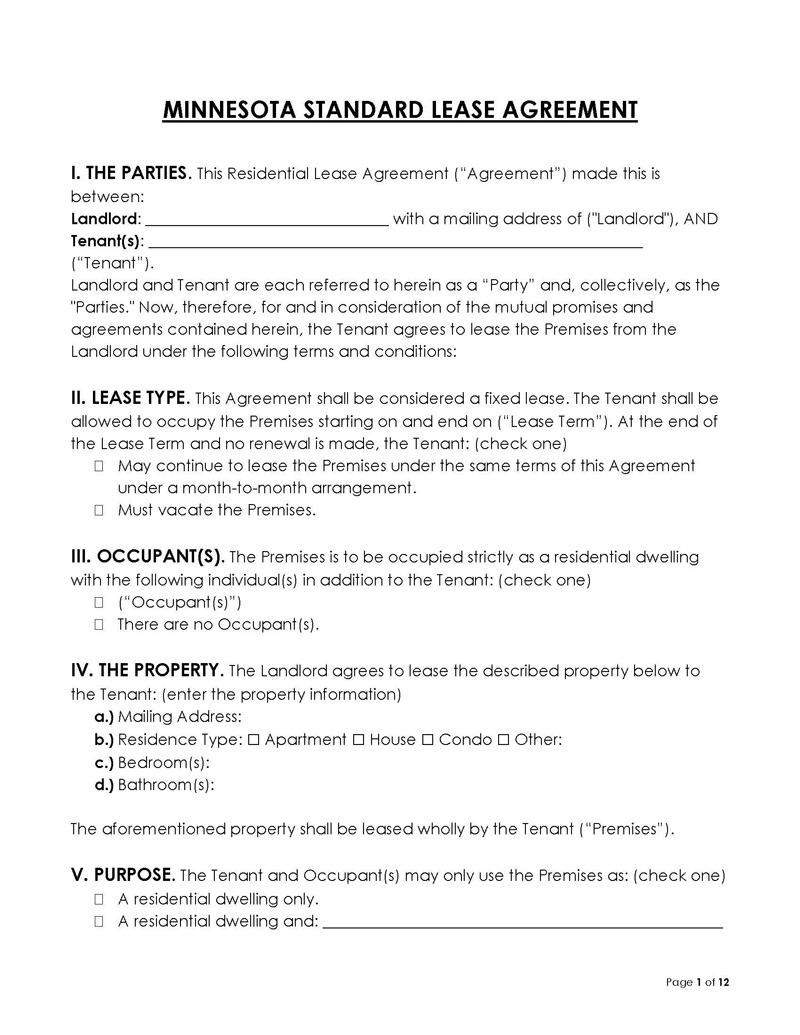
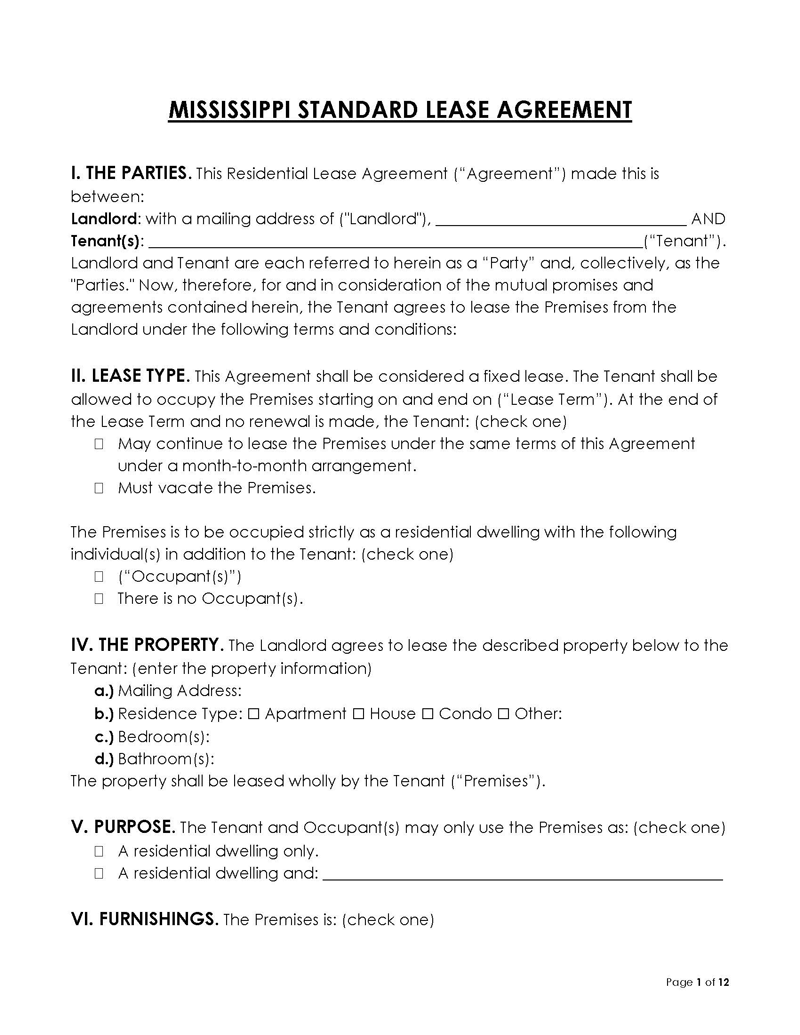
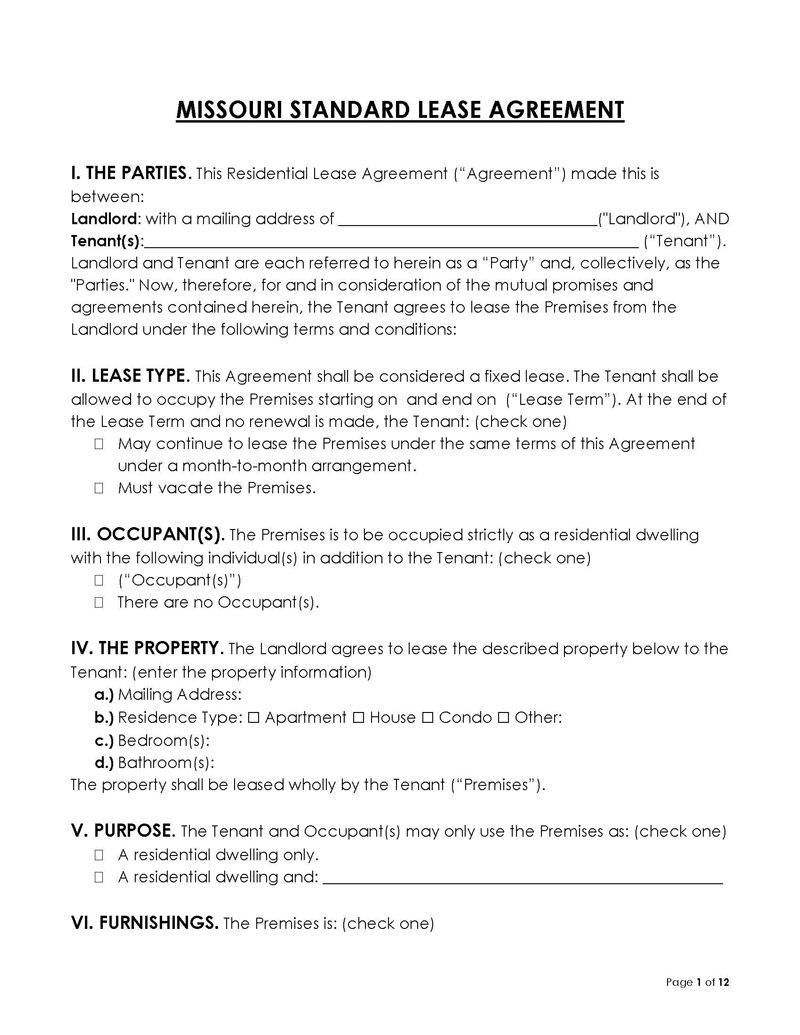
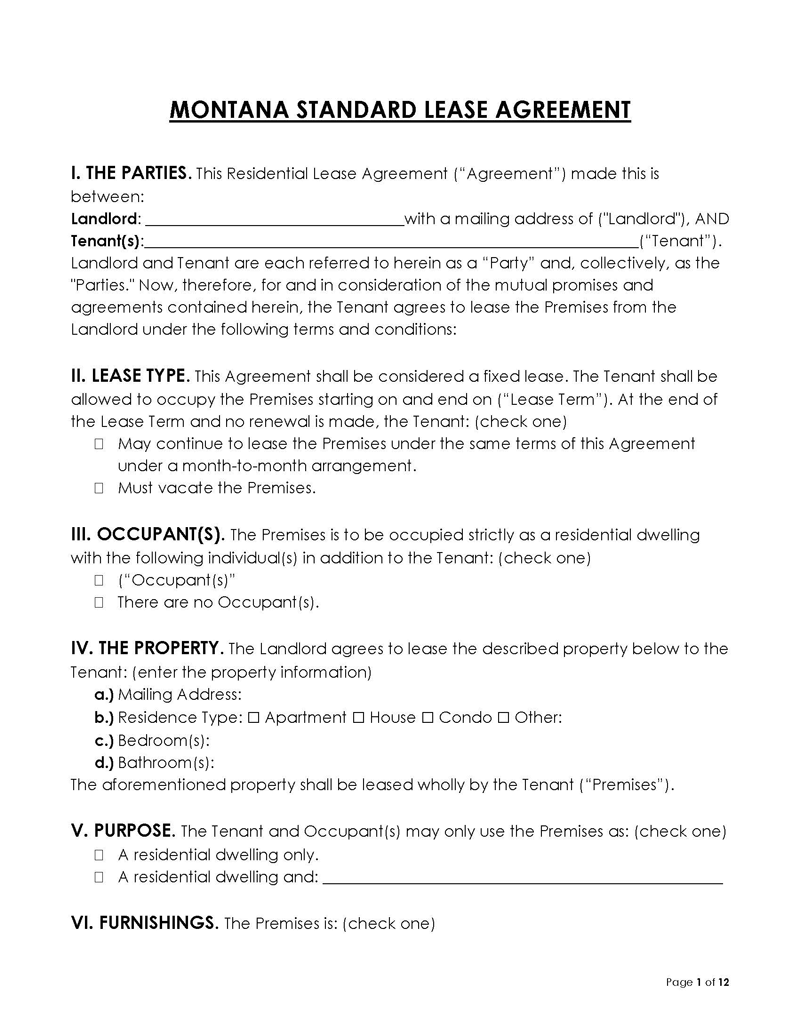
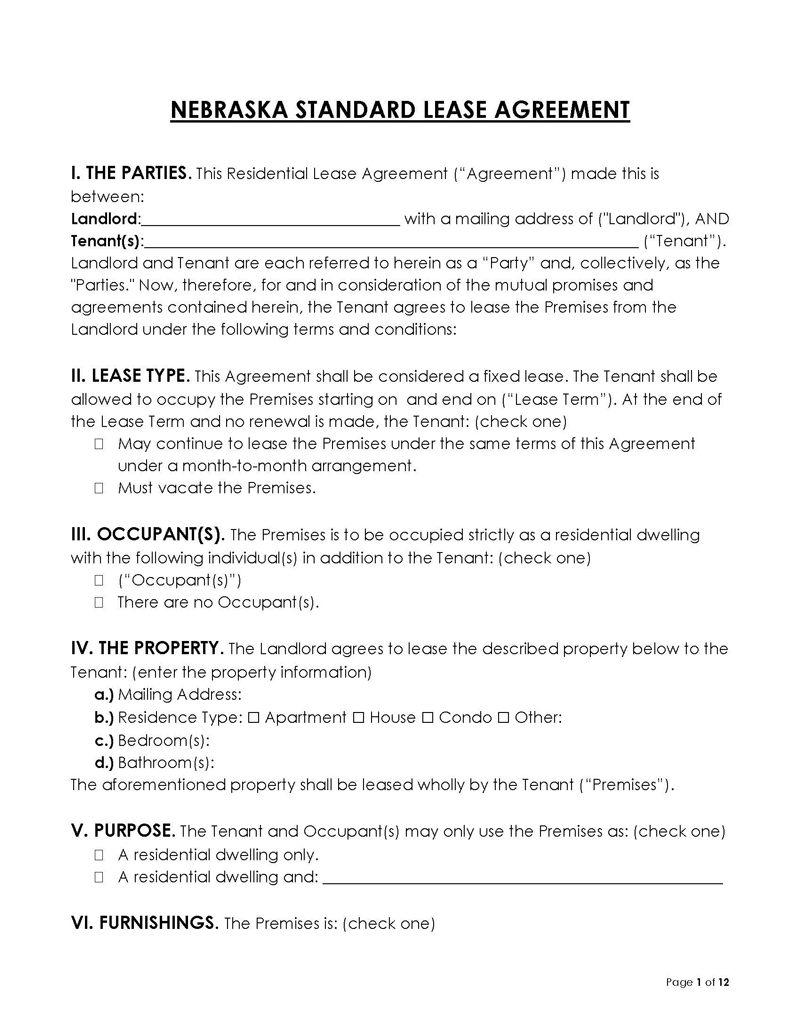
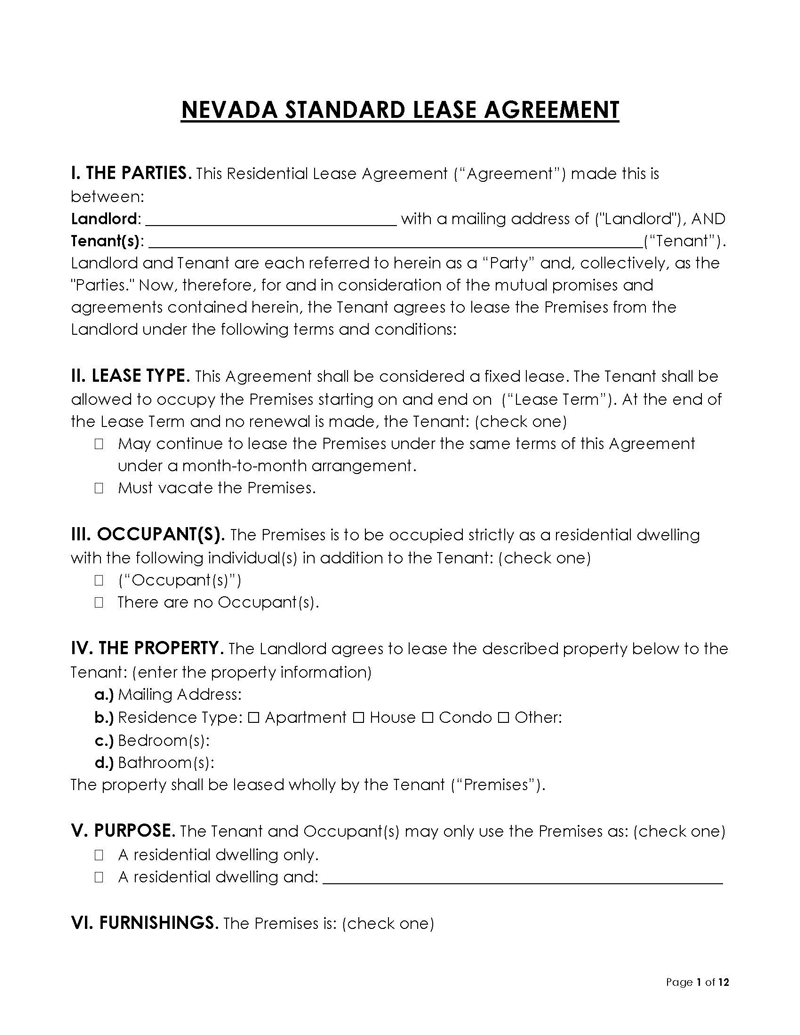
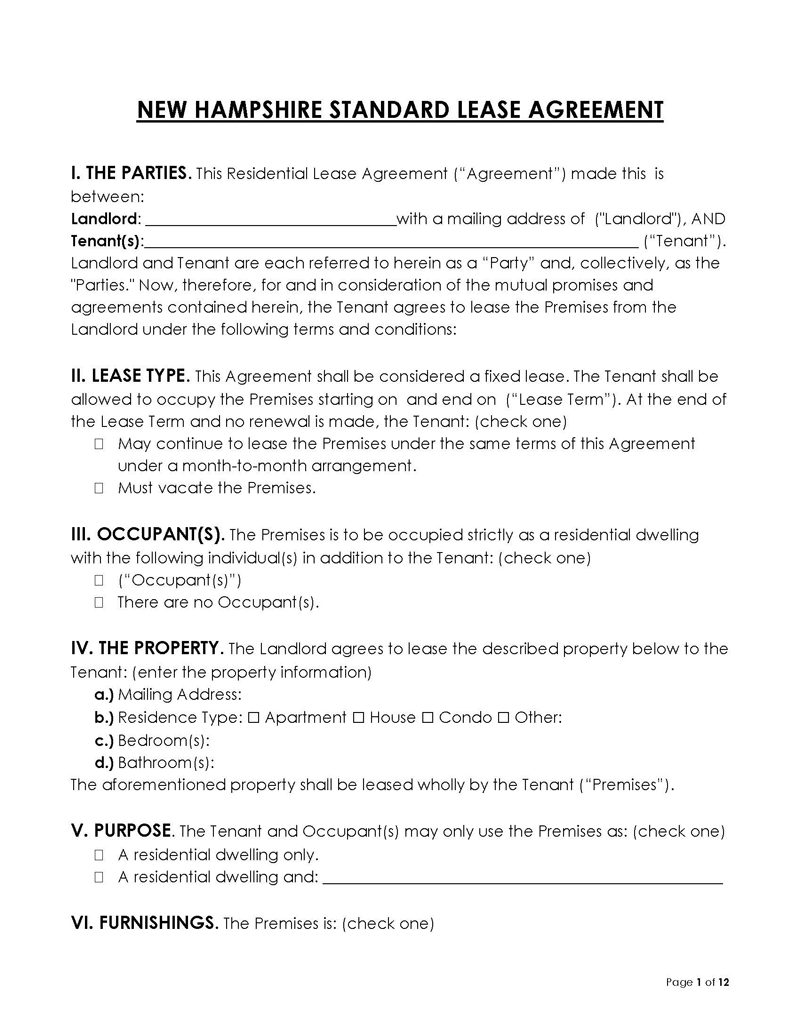
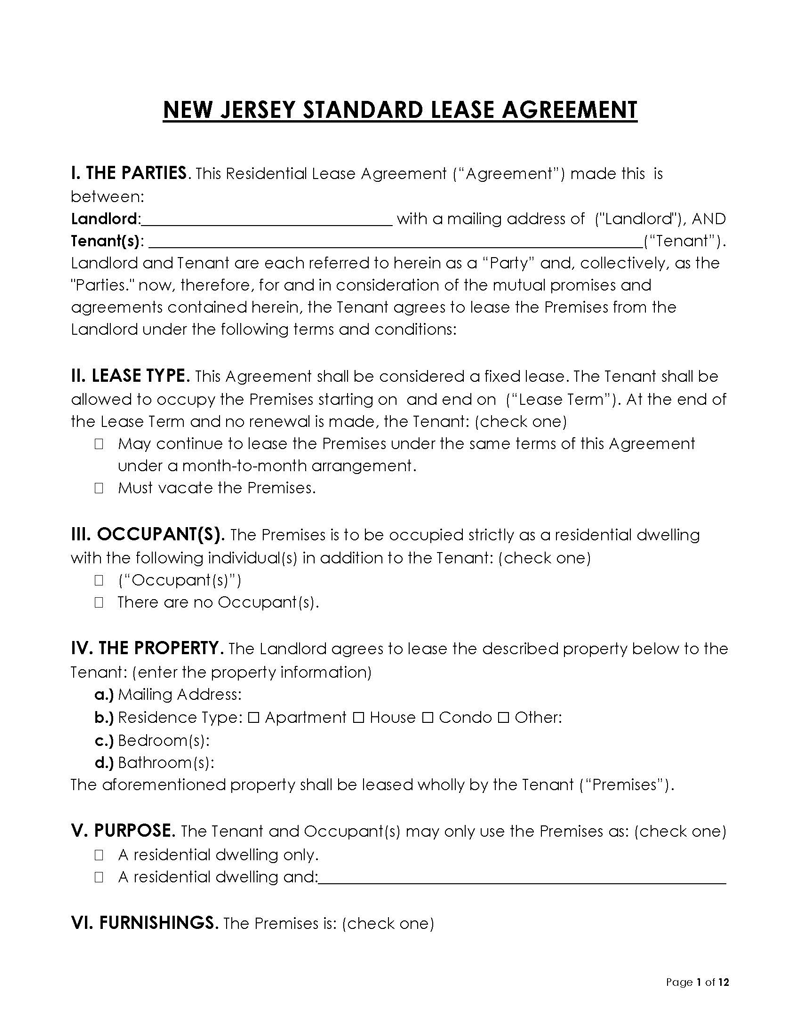
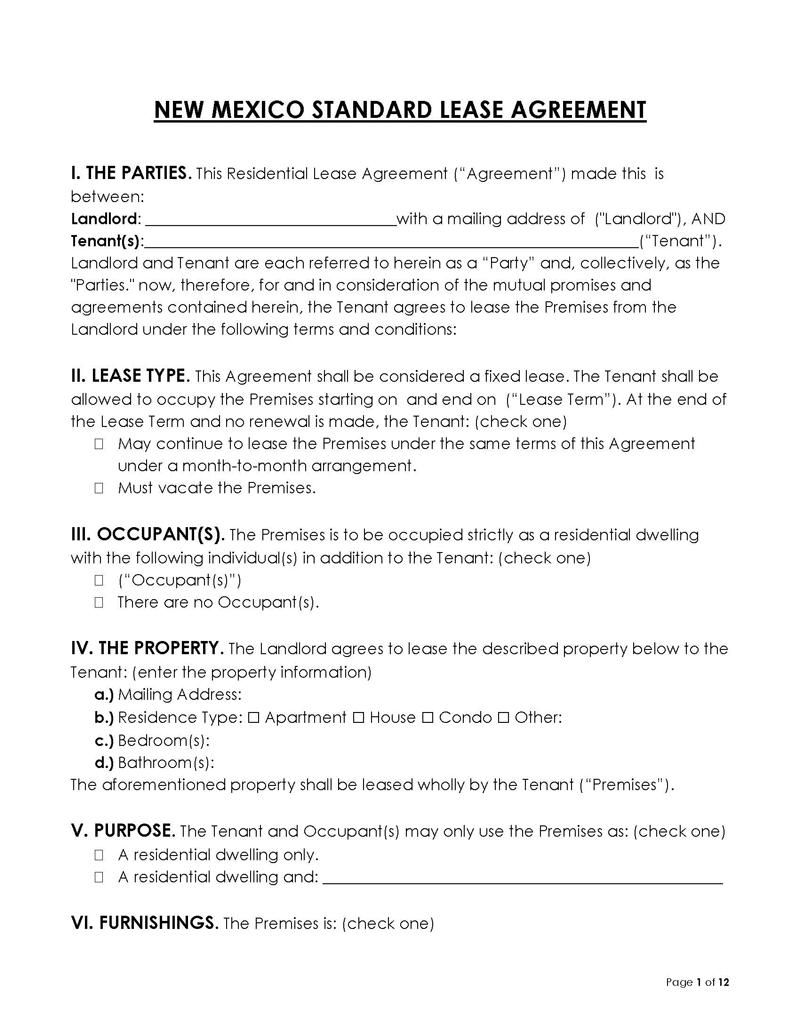
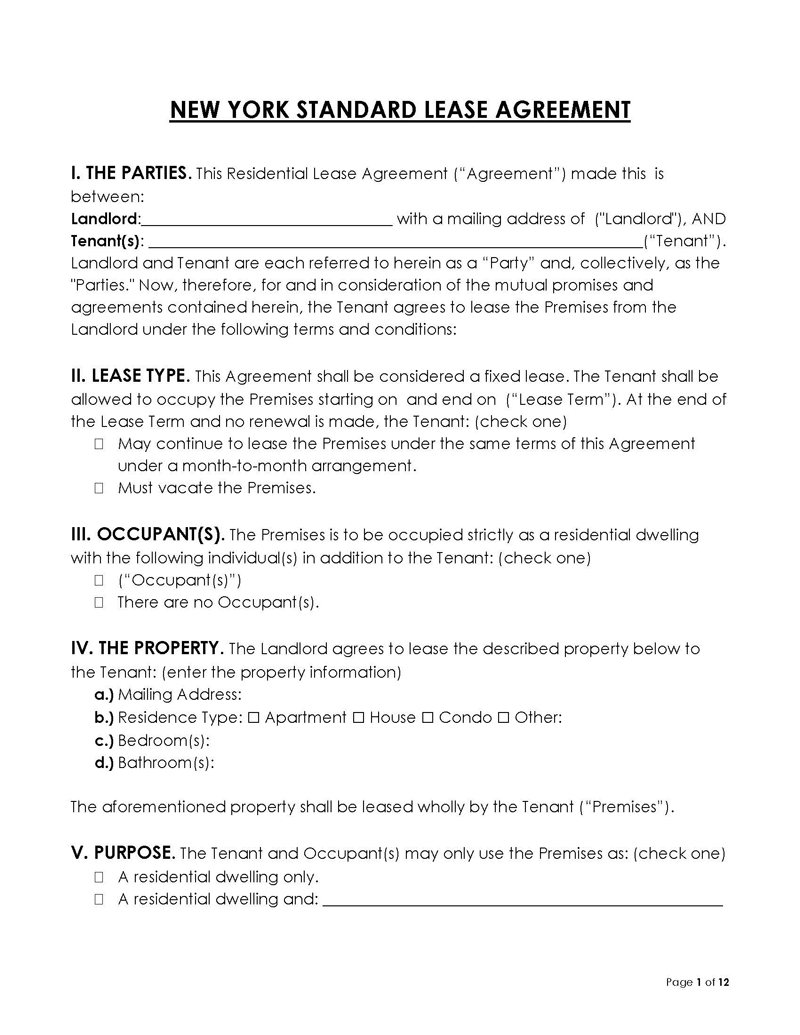
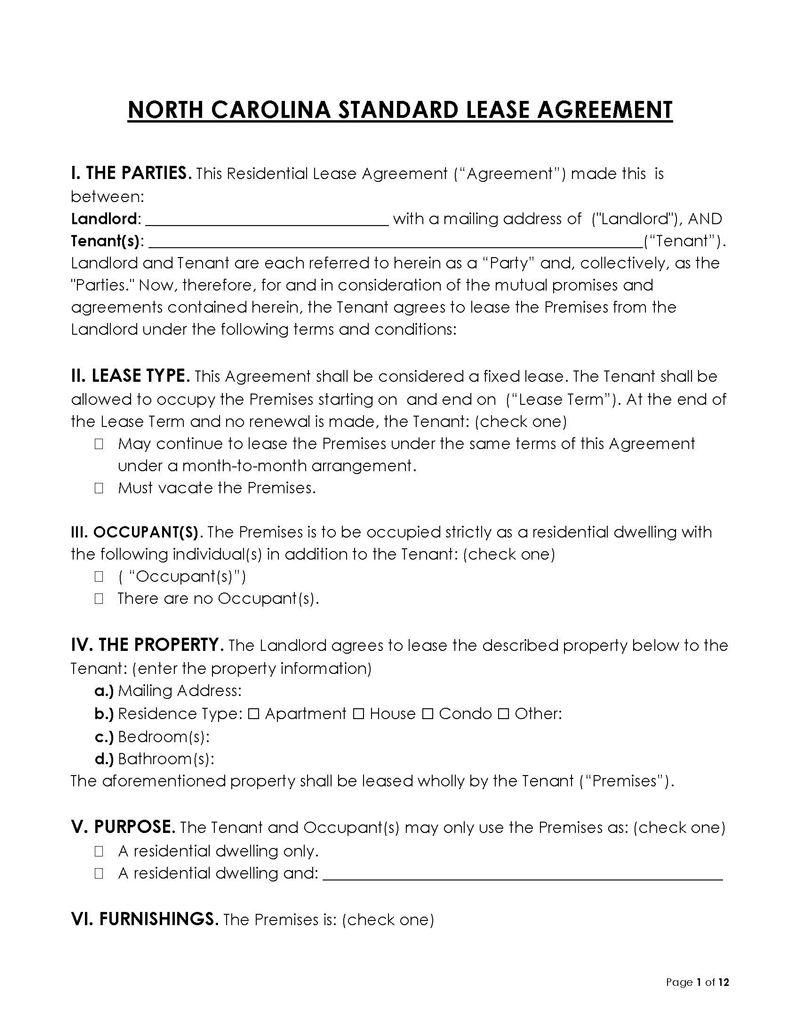
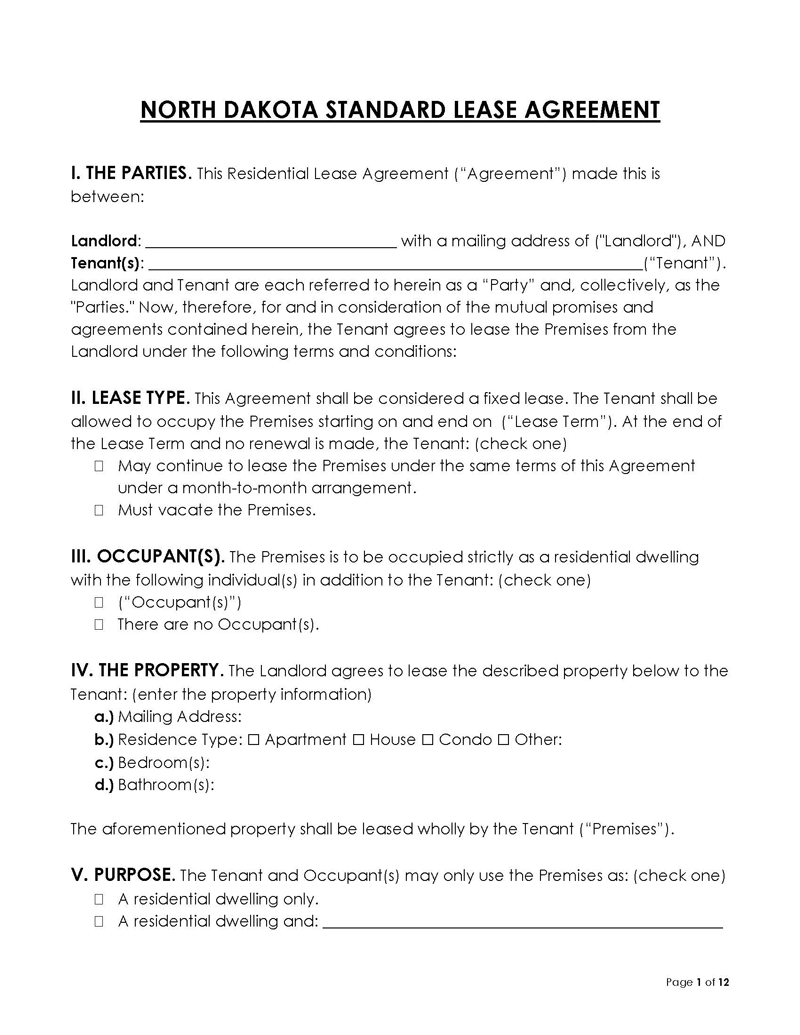
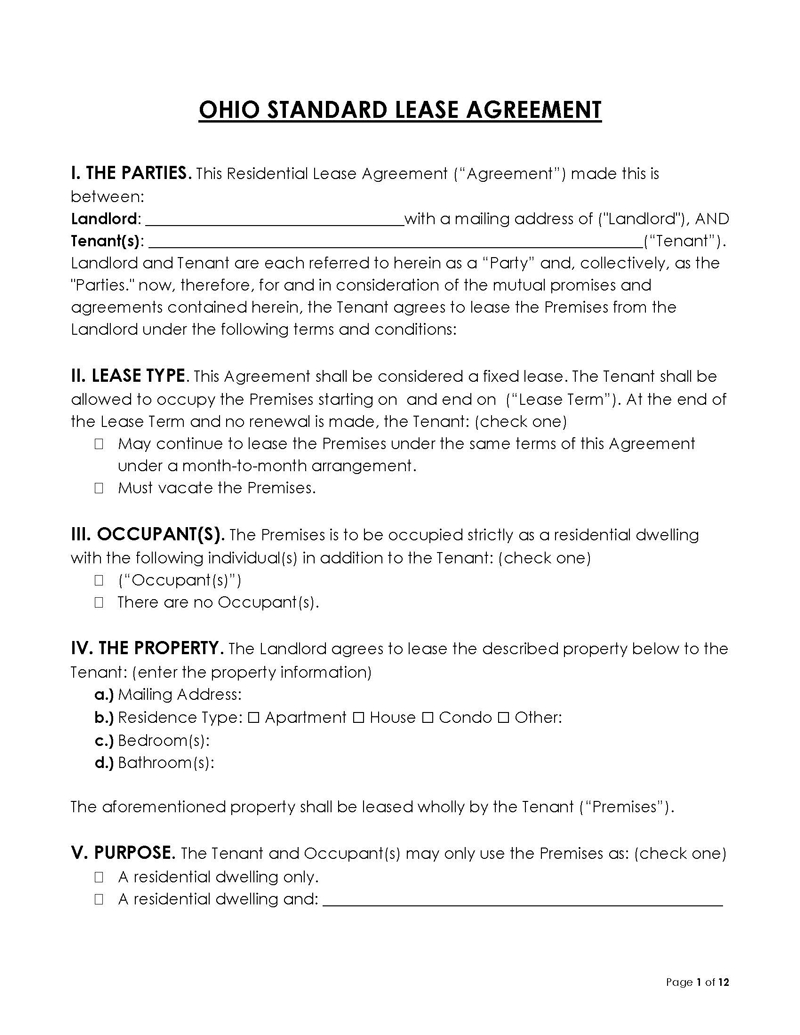
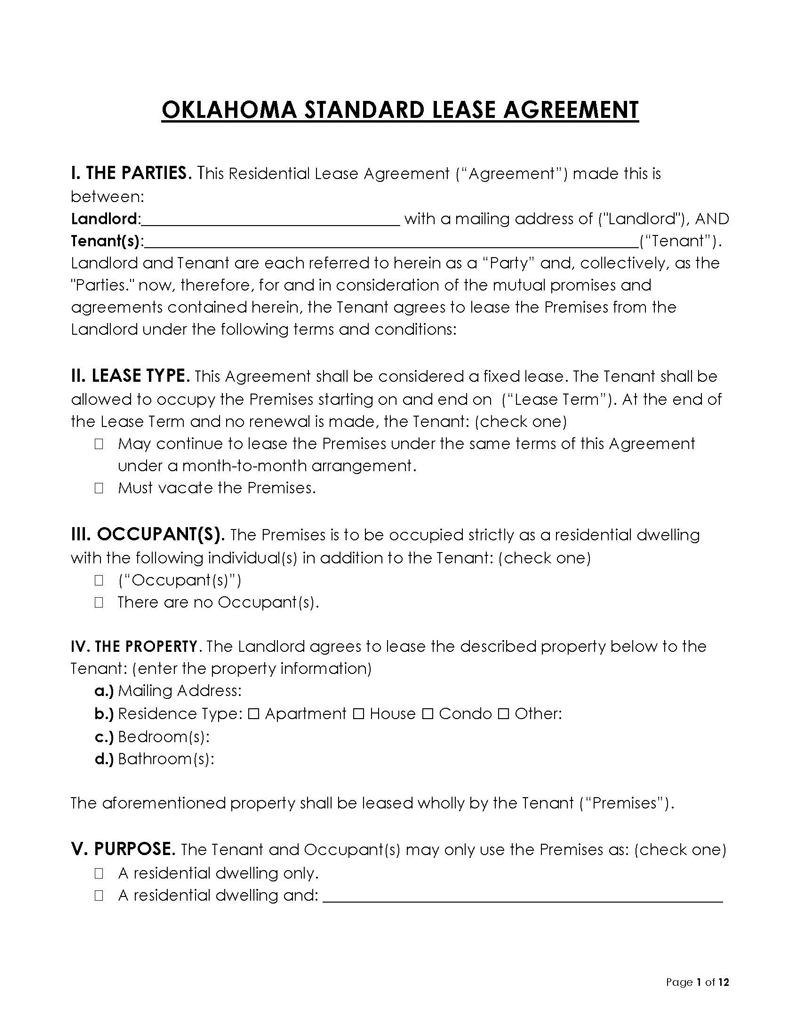
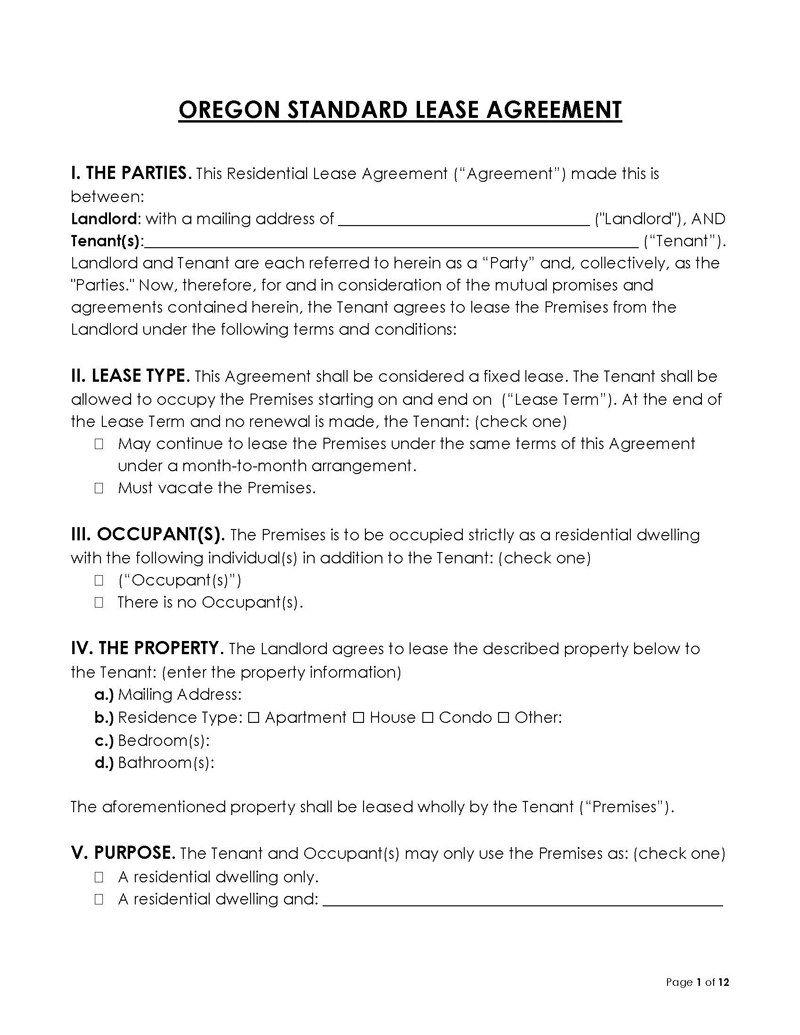
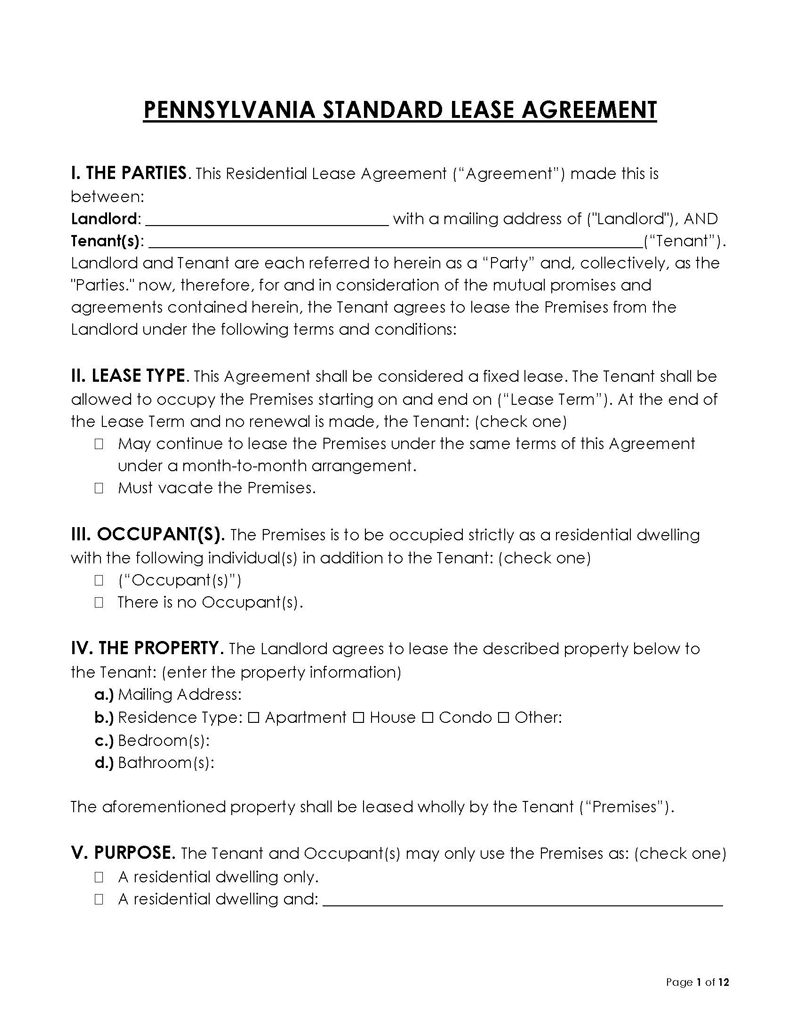
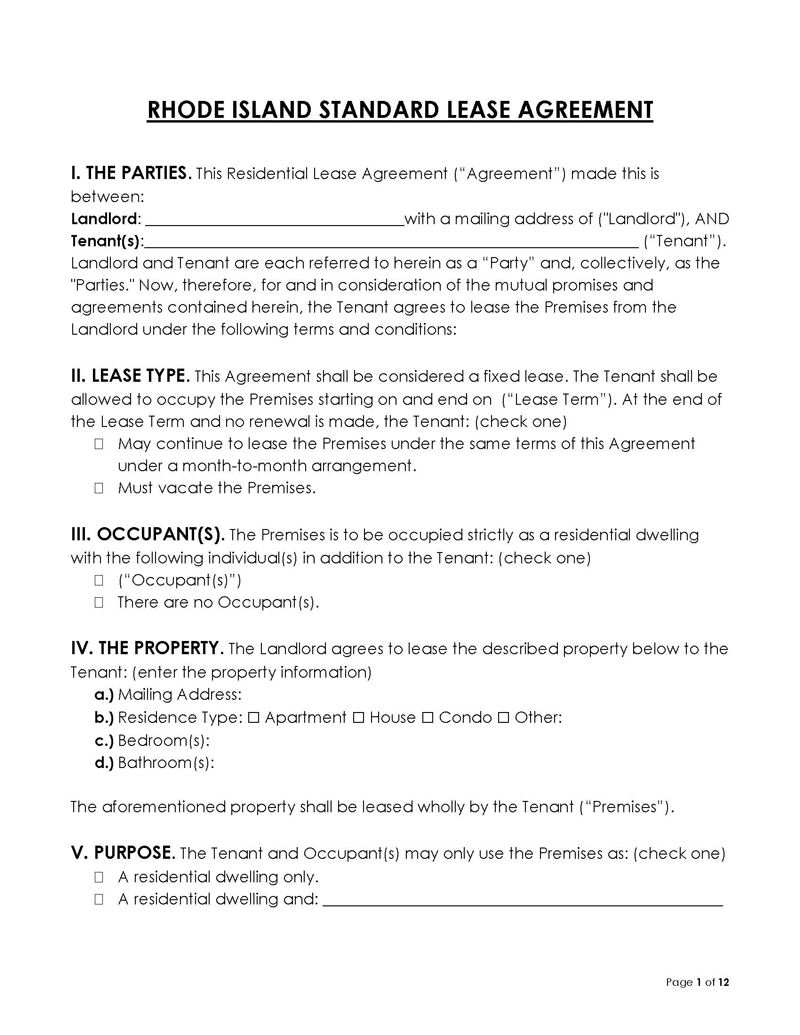
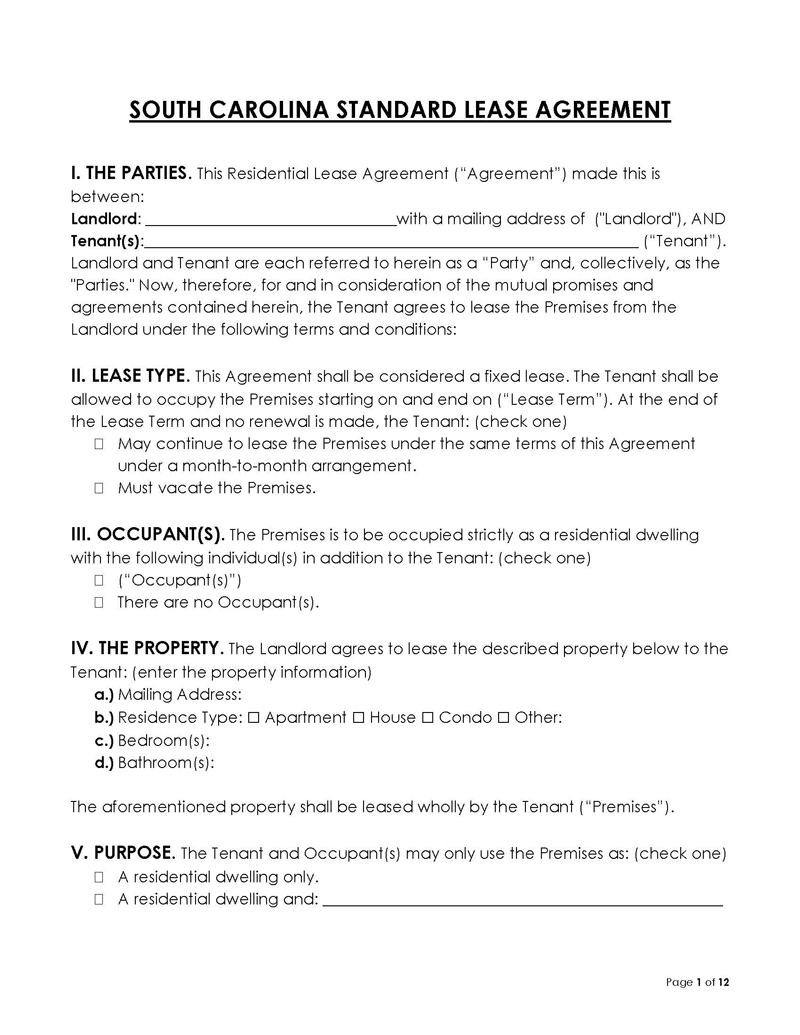
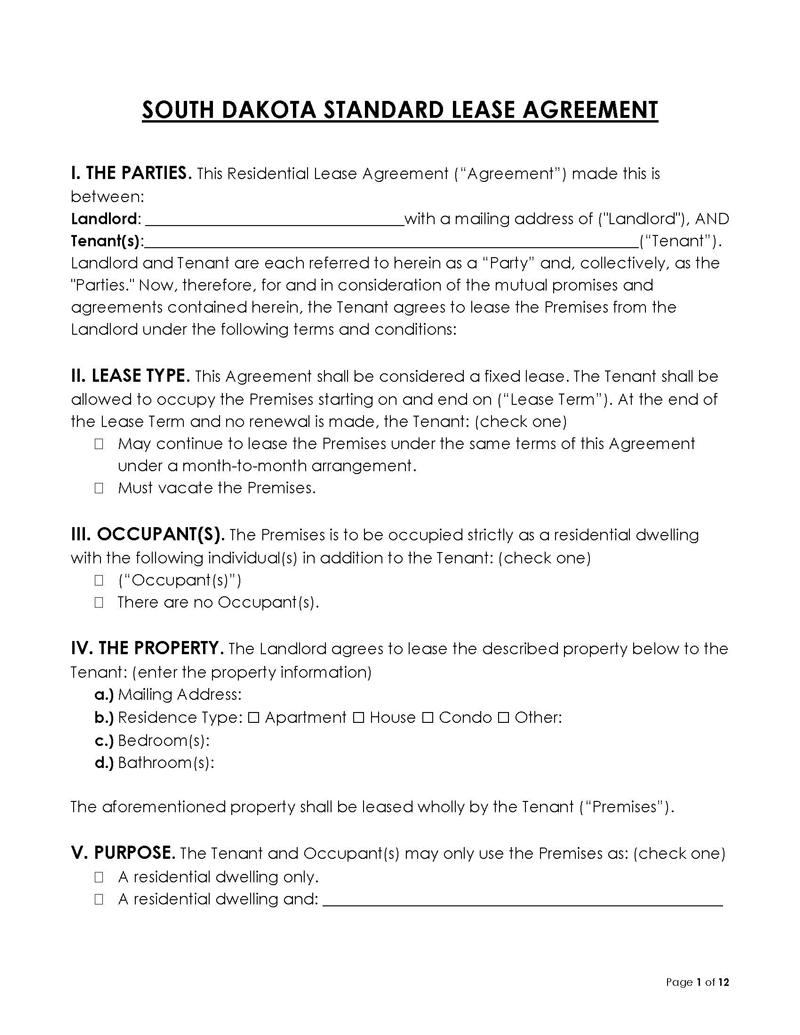
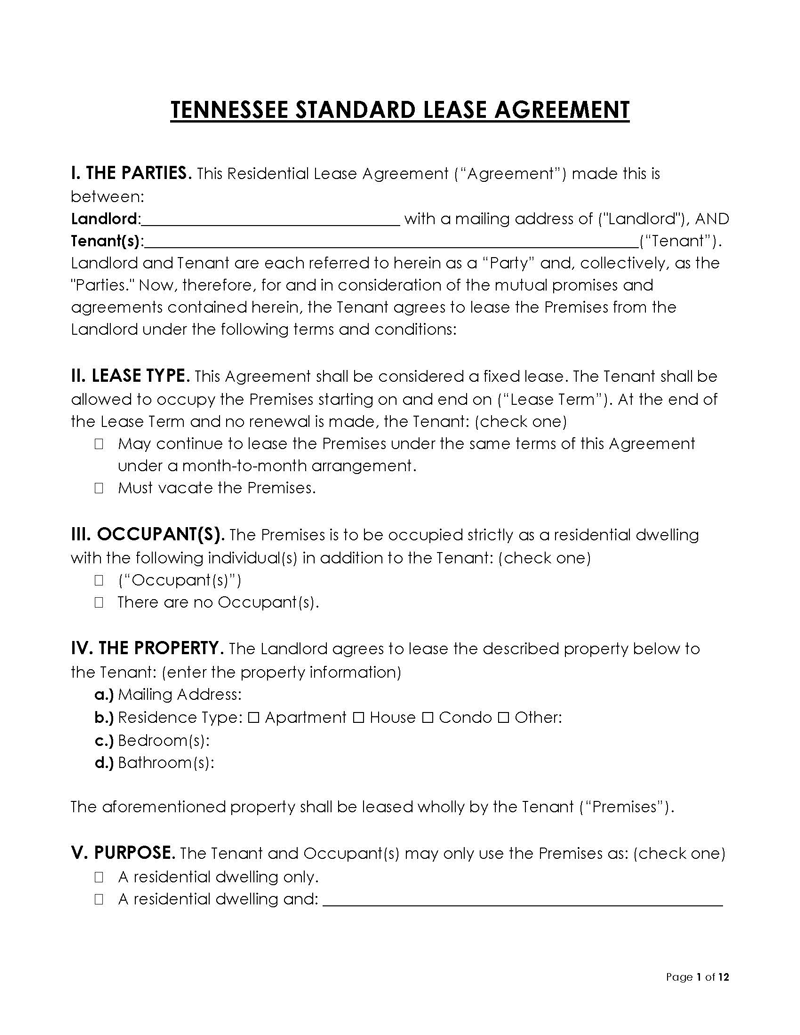
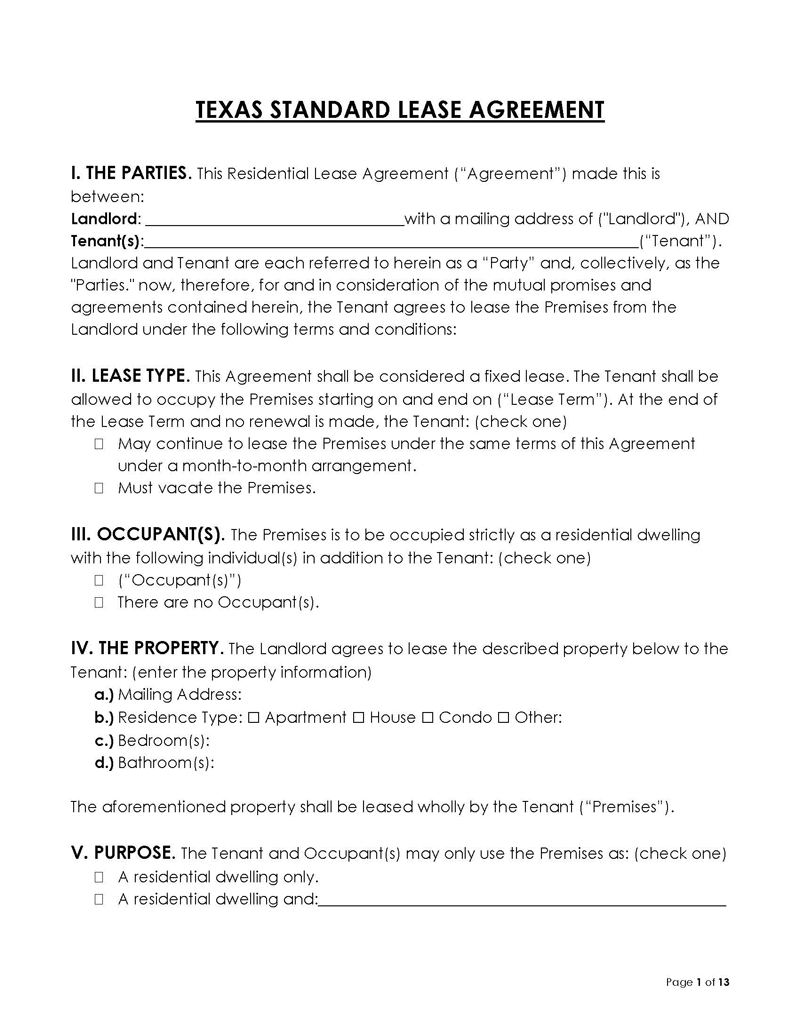 Texas Residential Lease Agreement
Texas Residential Lease Agreement